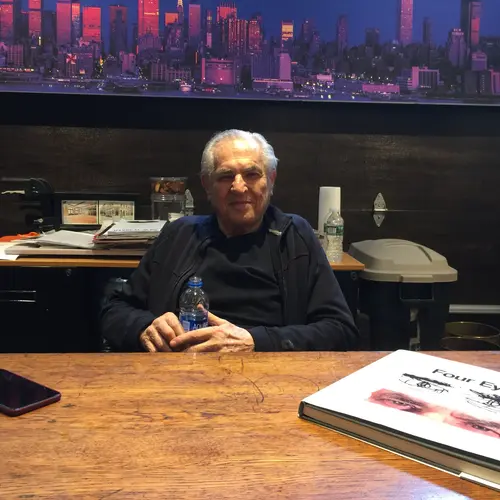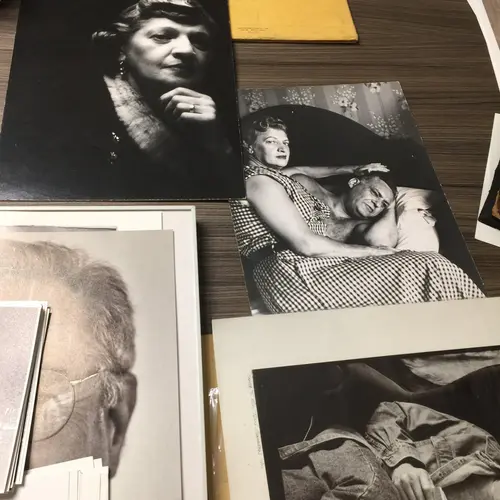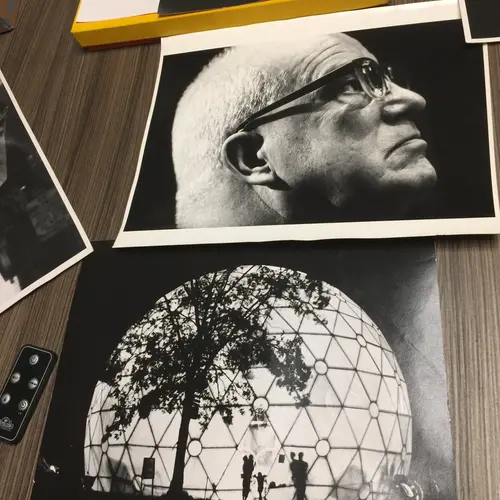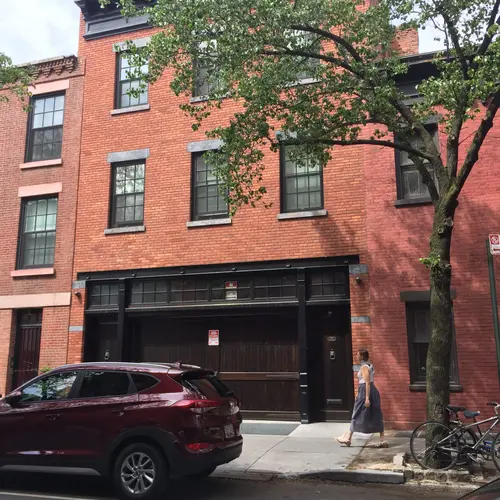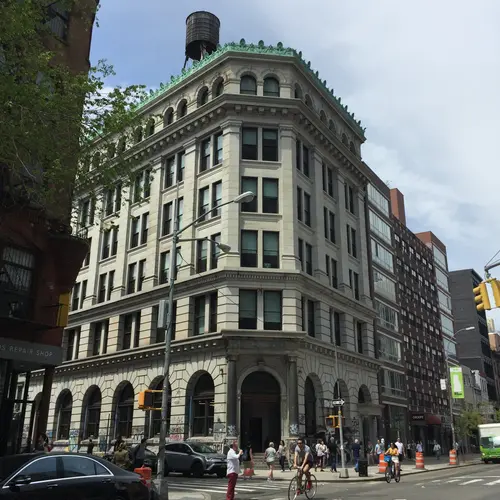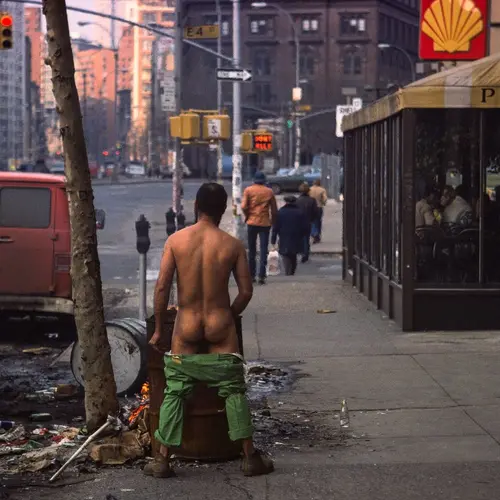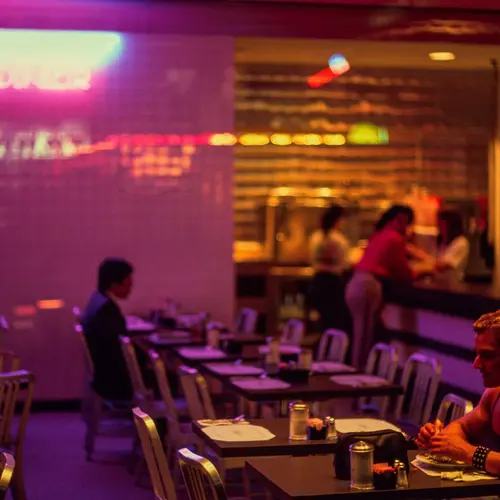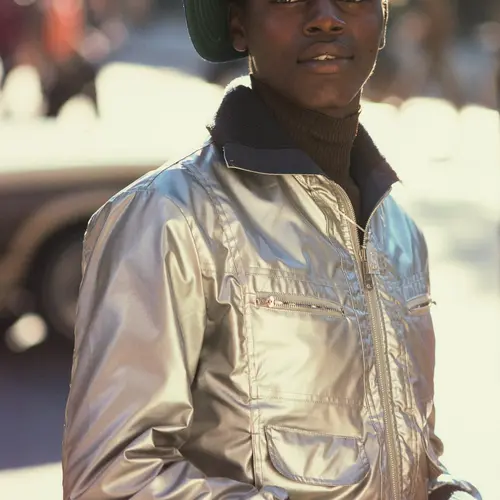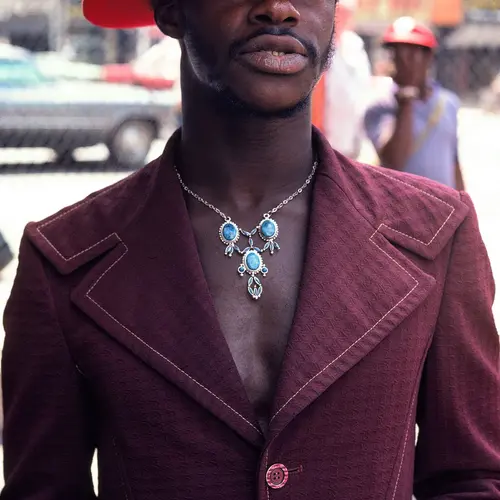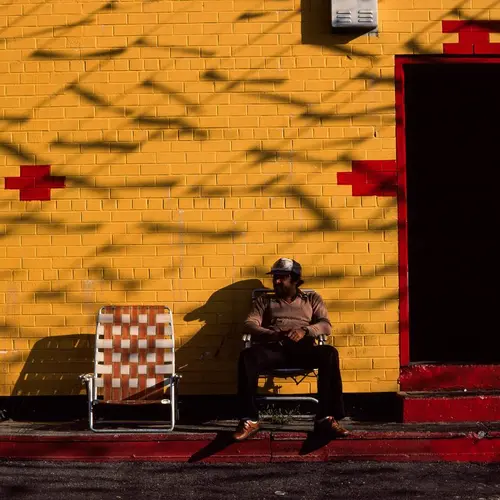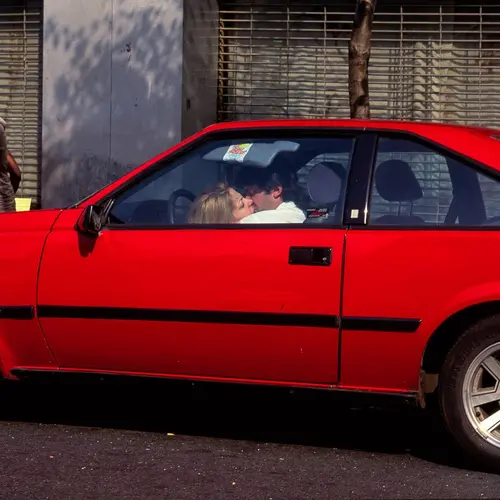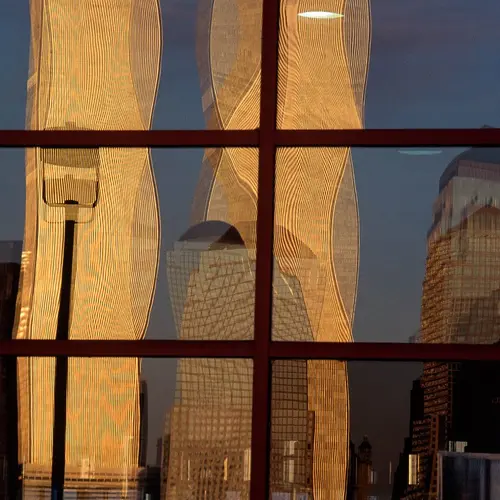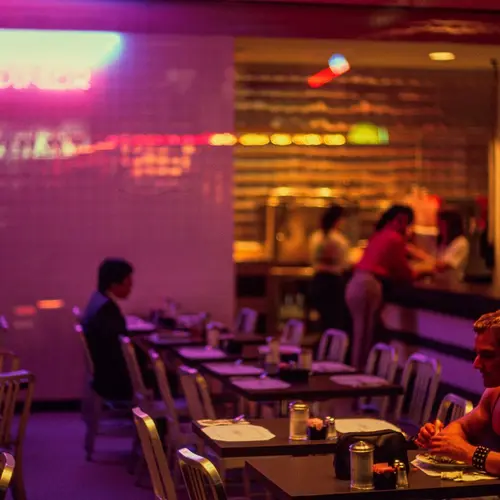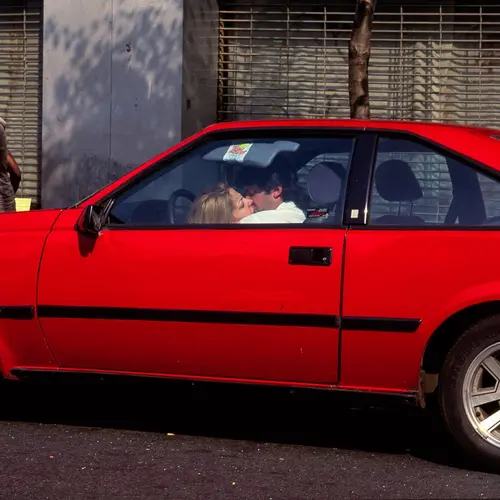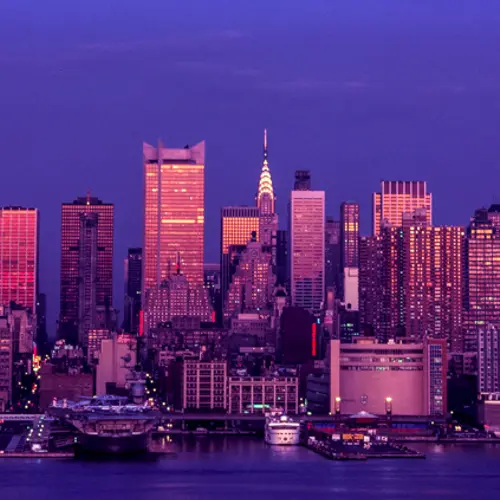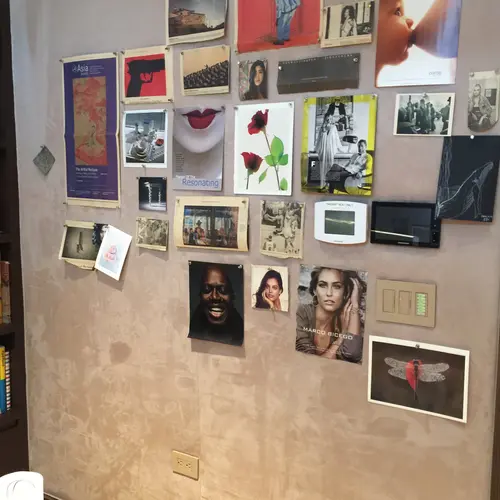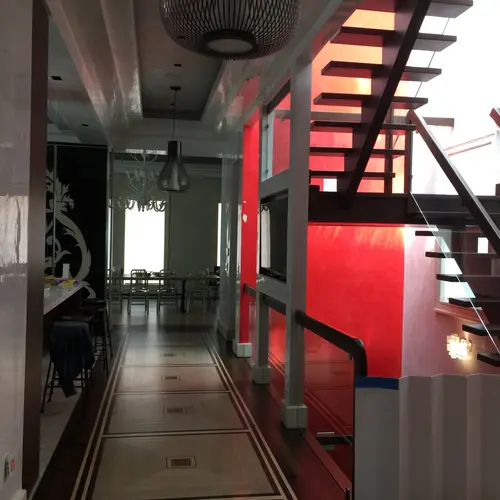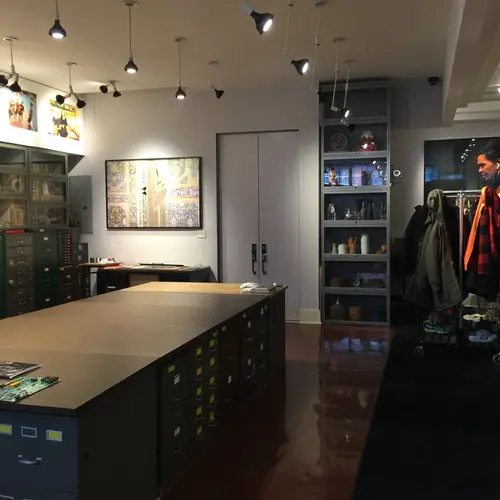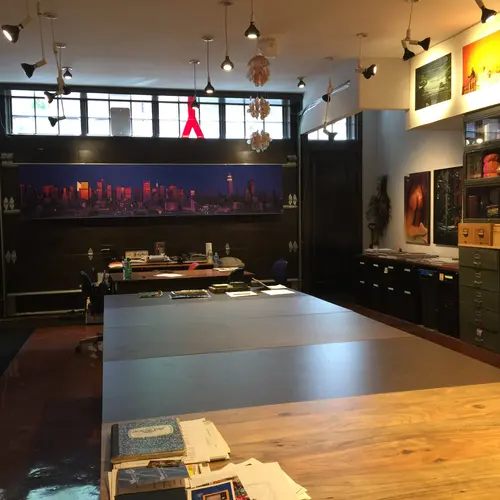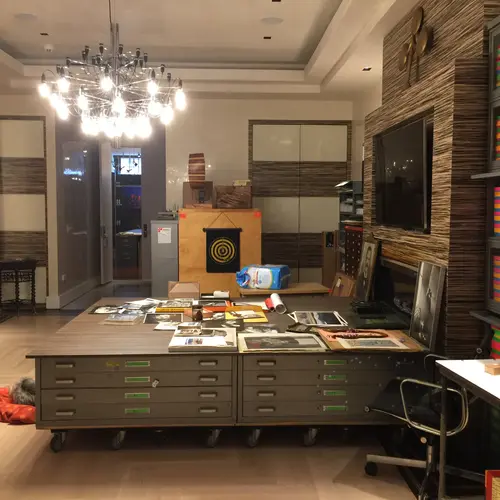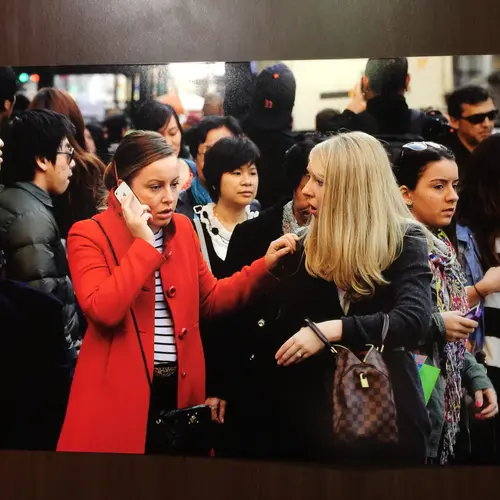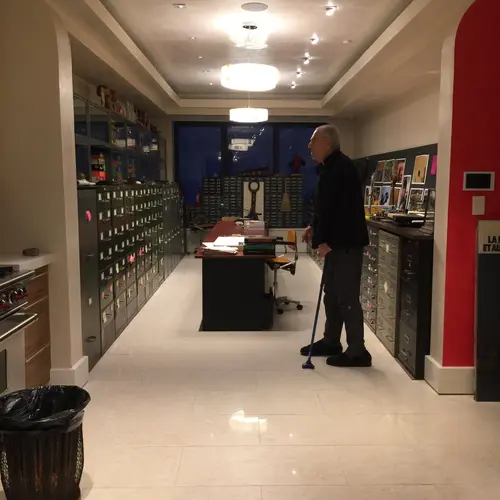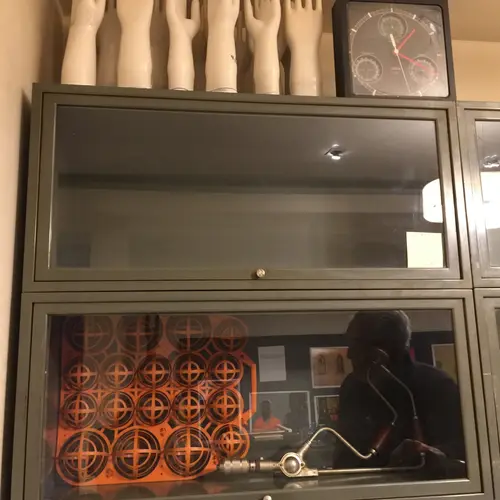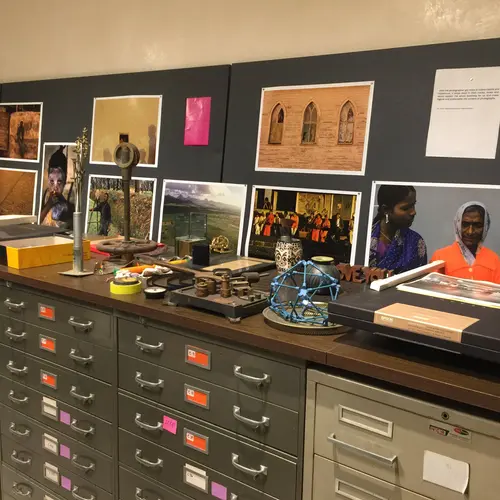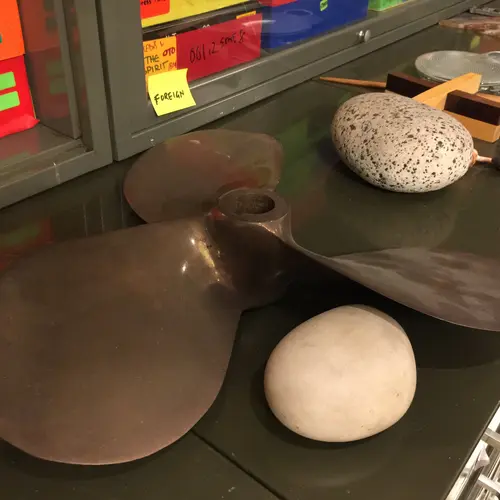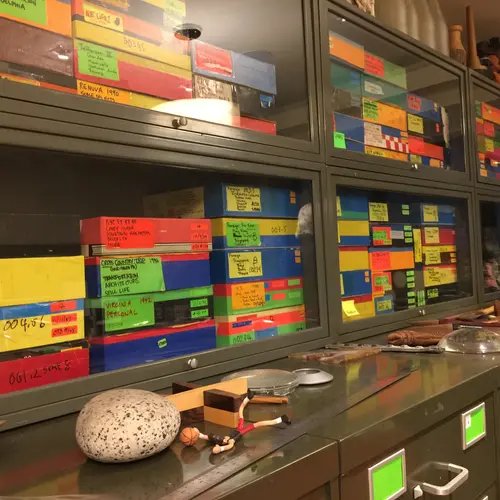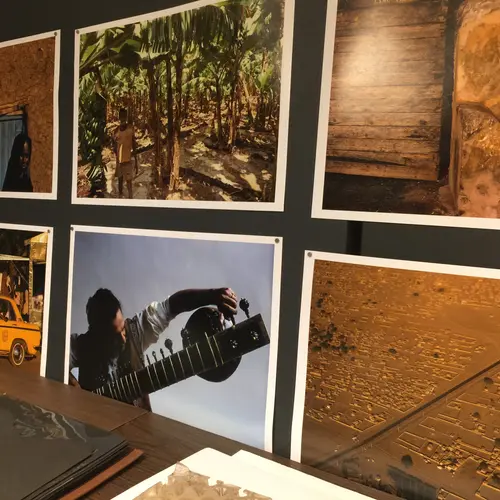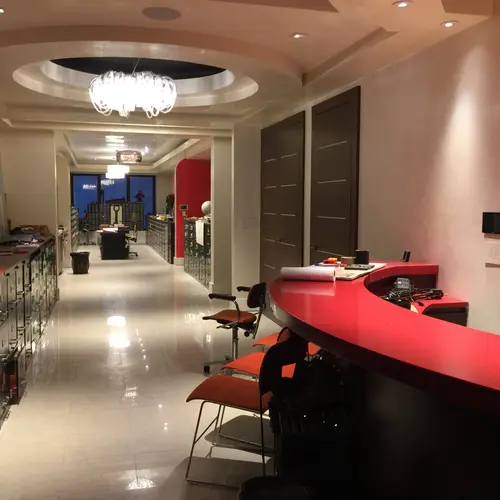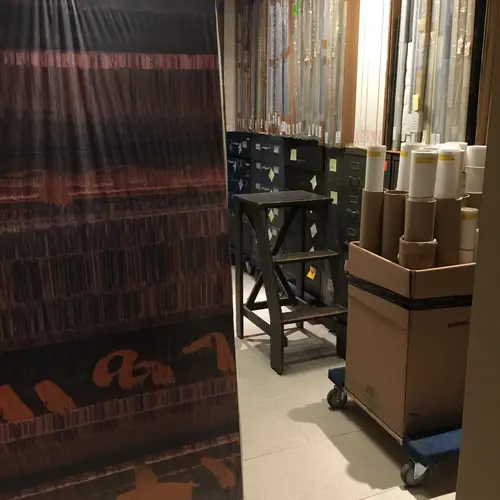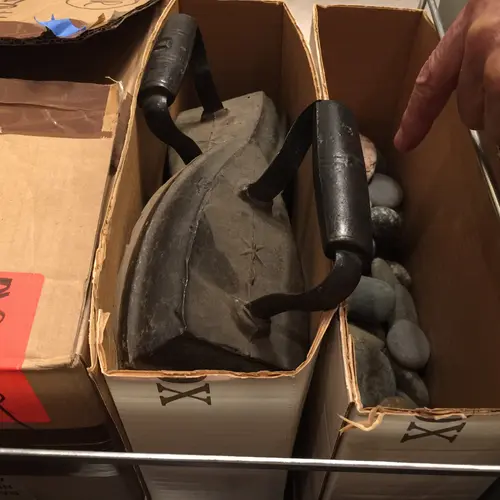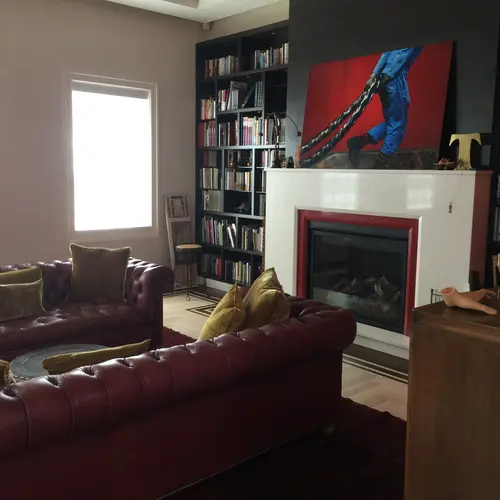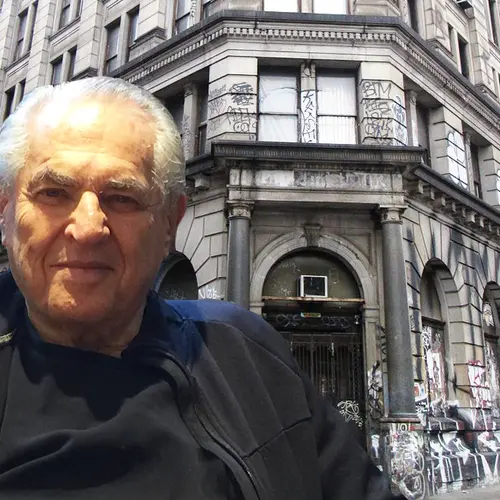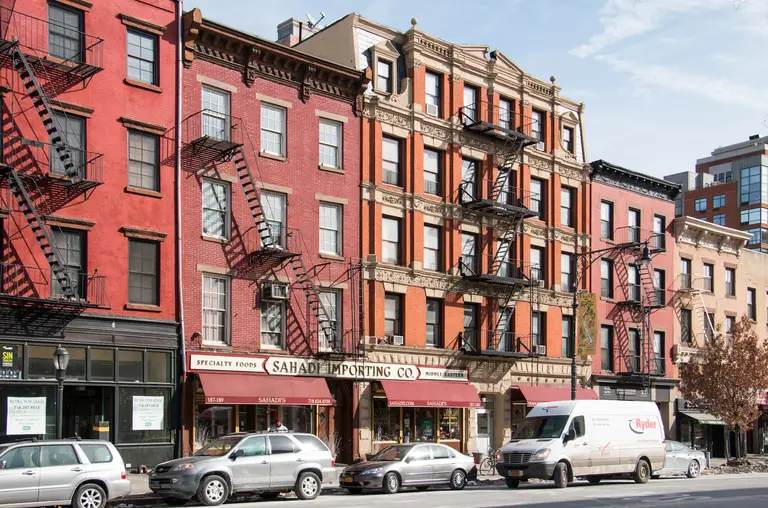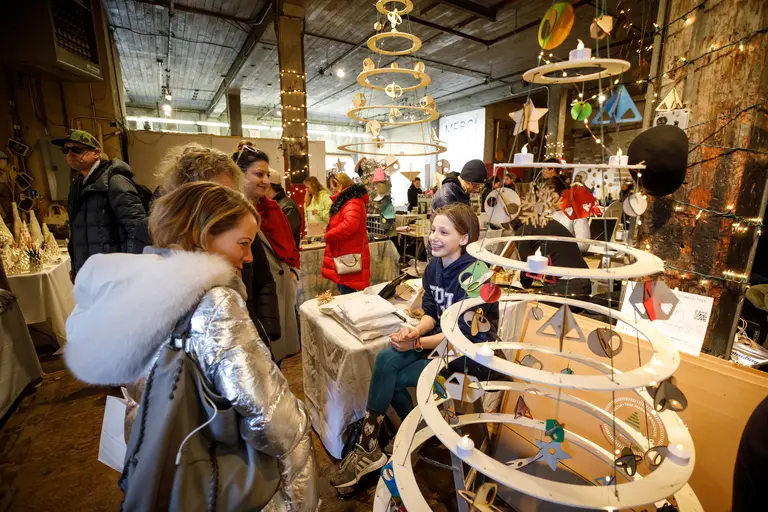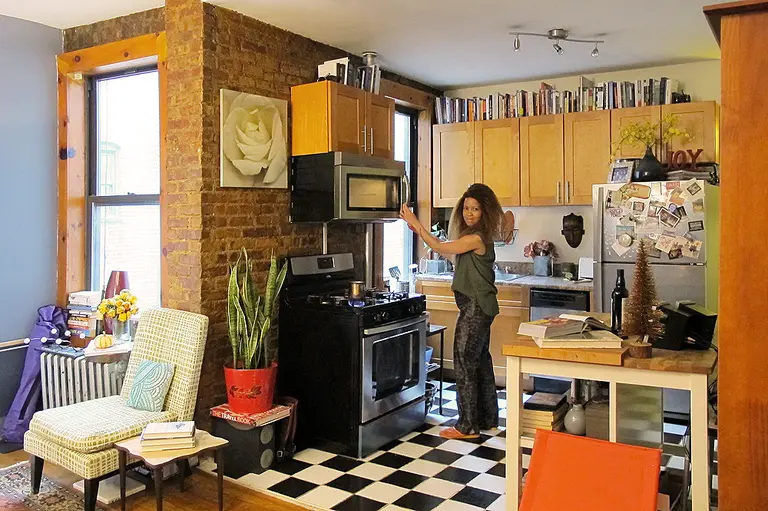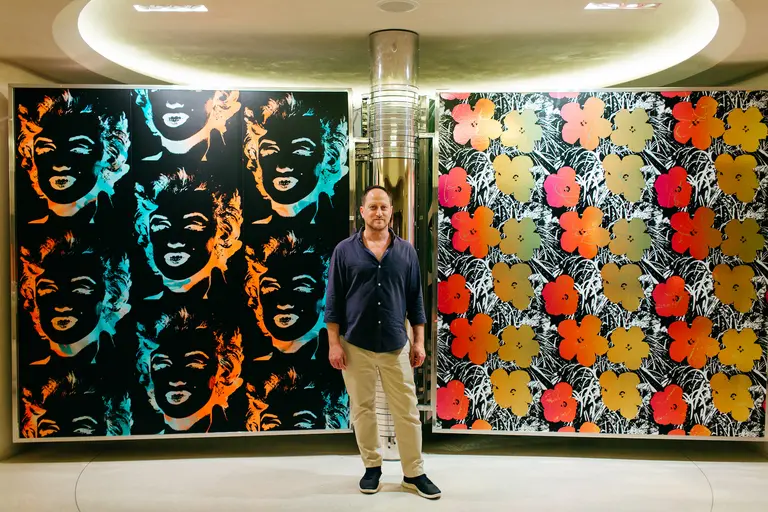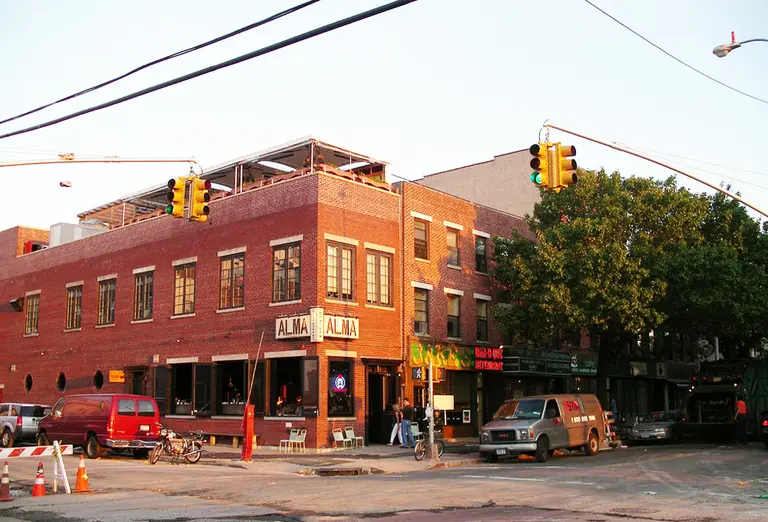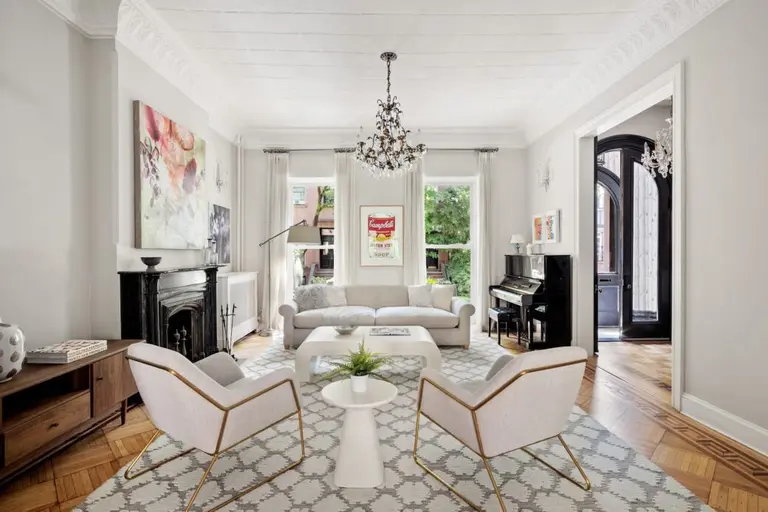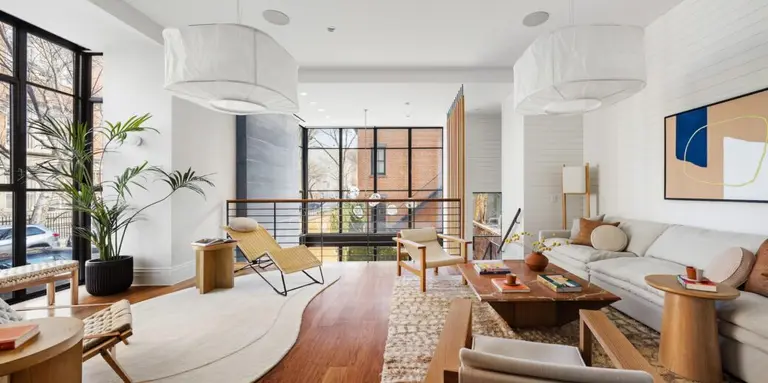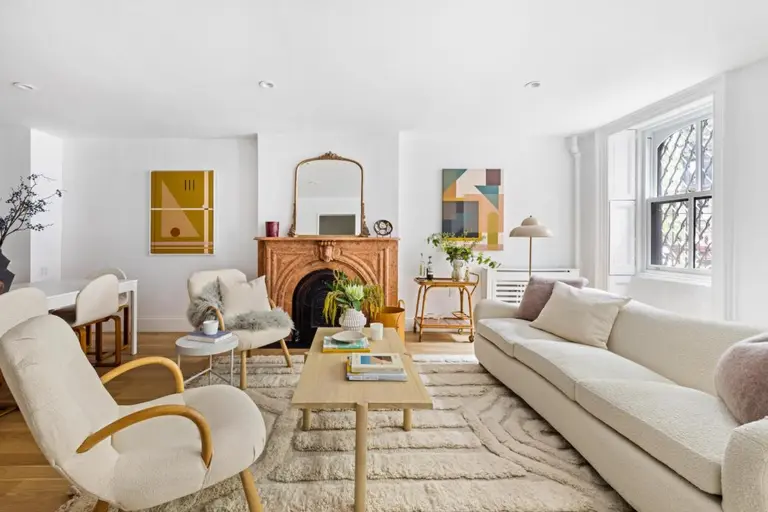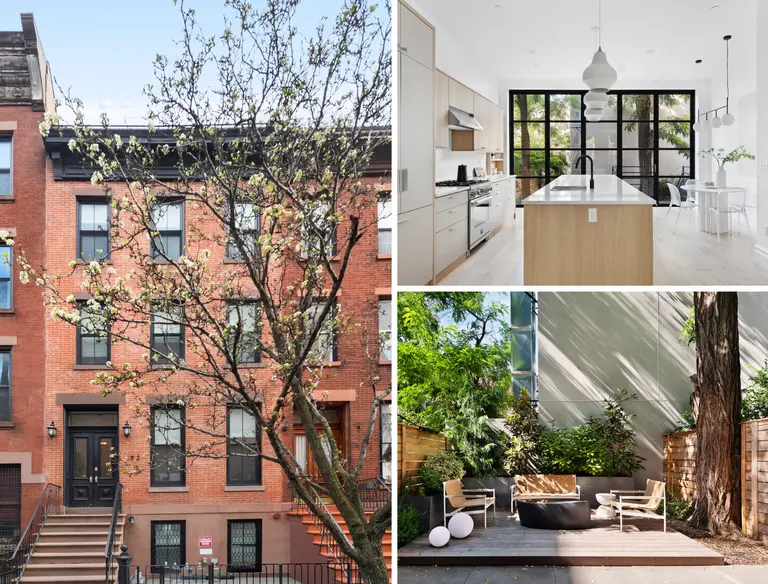INTERVIEW: New York legend Jay Maisel dishes on 190 Bowery and his new photo archive
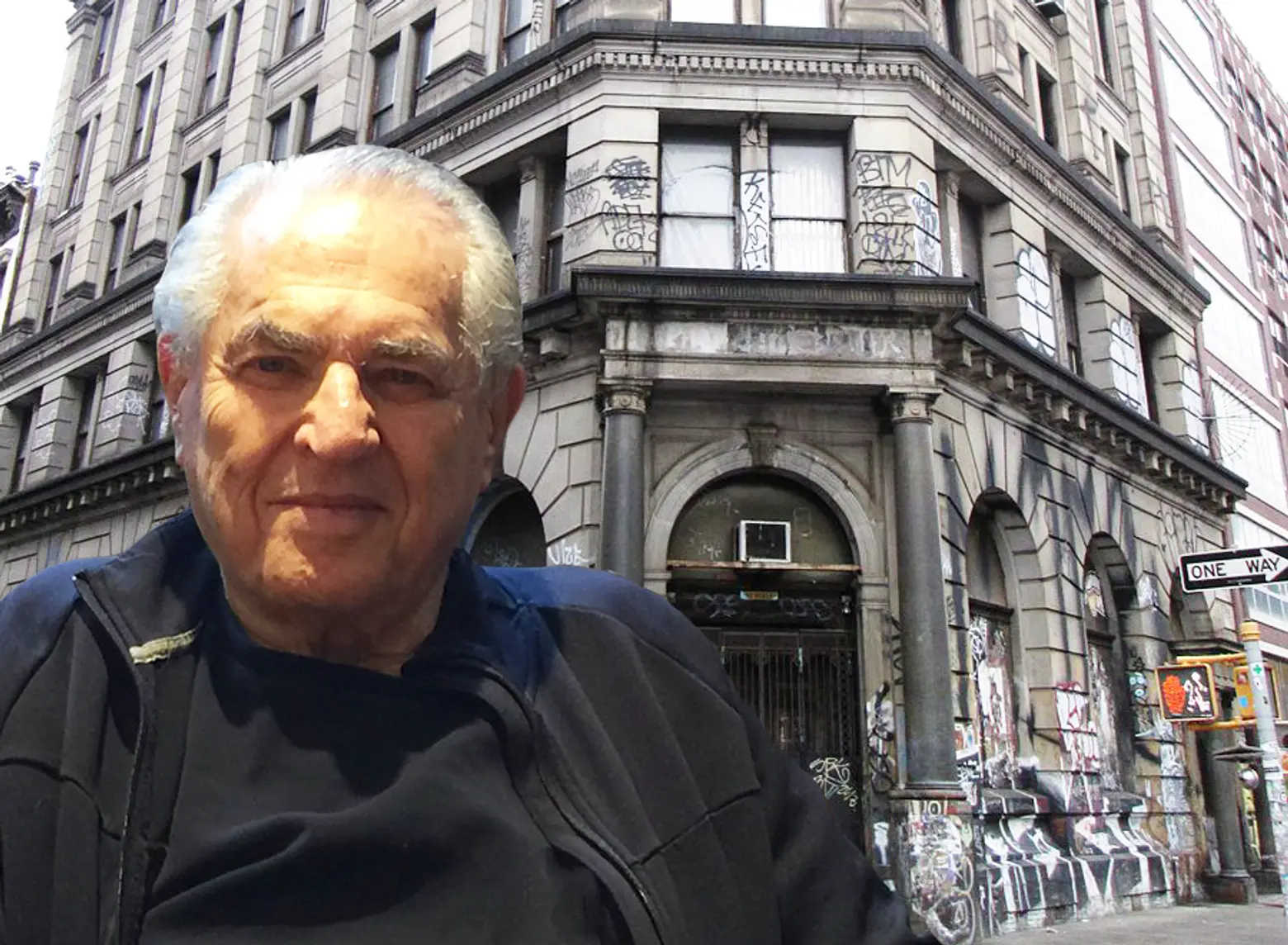
Jay Maisel is best known for the incredibly expressive stories he tells through his beautiful photography. But in recent years, he’s become perhaps just as well known for his New York City real estate story where he made the deal of the century when he sold his home, the Germania Bank Building at 190 Bowery. What he’s not at all known for, though, are the stories he tells through the hundreds of thousands of memories that fill his home and studio.
Maisel, who may appear gruff on the exterior (at 87 years-old, he still likes to shock), is actually incredibly kind and sentimental. He misses his home and all his toys that once filled the 35,000-square-foot building. Although he was initially intimidated by the size and upkeep costs of 190 Bowery, Maisel grew to love the home and raise his family there for 50 years. In 2015, he sold the building for $55 million and purchased a stately townhouse on Pacific Street in Cobble Hill for $15.5 million. (At the time, it was the most expensive townhouse sale in Brooklyn.) 6sqft sat down with Maisel and discussed his real estate coup, his move to Brooklyn (which is not “the city” in his view) and his most recent New York City photography series, entitled “Jaywalking.”
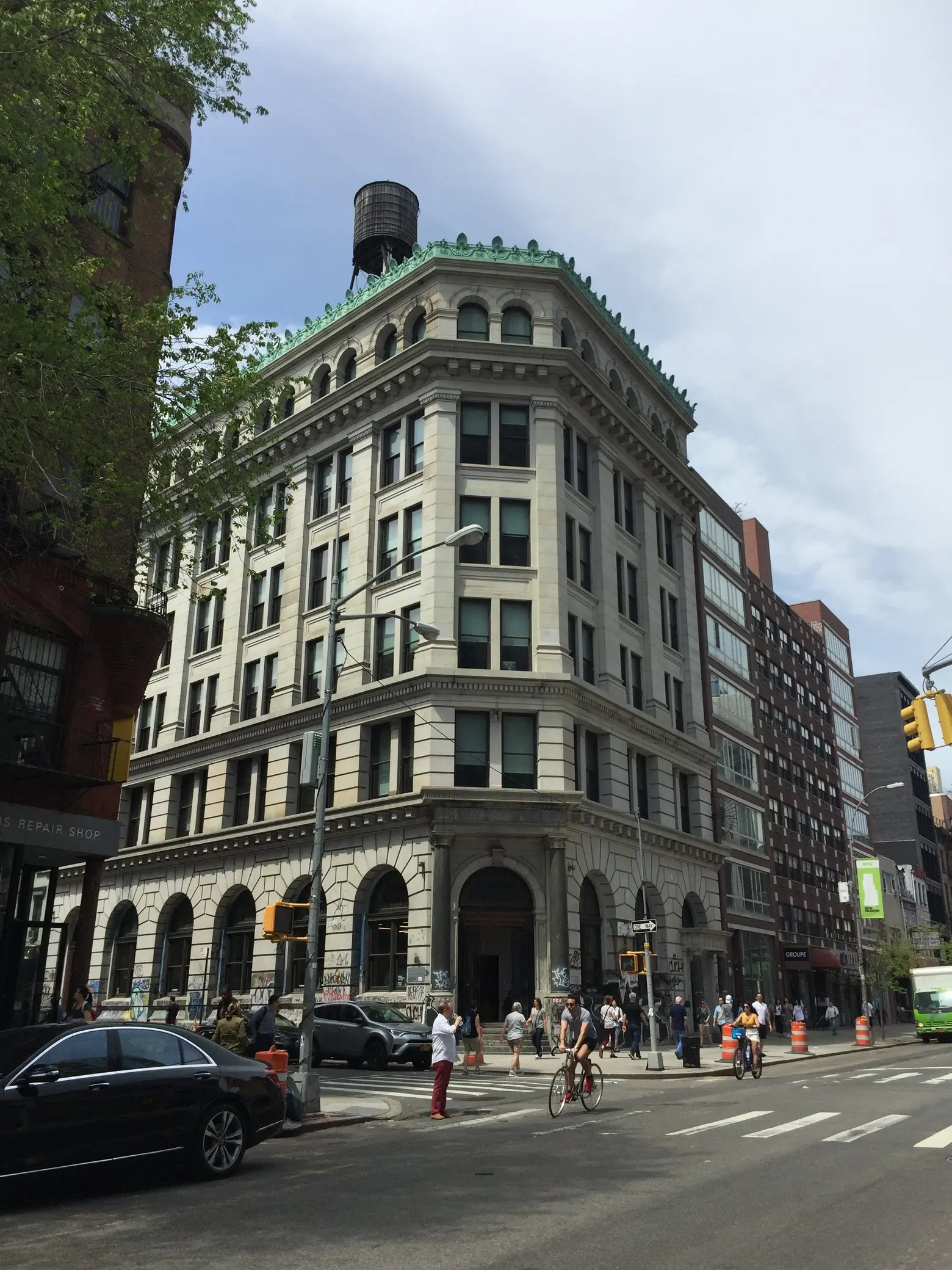
What was it like living in 190 Bowery? What caught your eye with that building?
I lived at 190 Bowery for almost 50 years. I was aware of what a gift it was. I didn’t take it for granted at any point. It was an amazing experience and I’m sure no one else has ever had an experience like this. Wealthy people that have that kind of space don’t have usually don’t have the desire or ability to build it themselves. That’s what I did there. We never had a contractor. We had electrical and plumbing help because otherwise, it would’ve been illegal. I only had two tenants in the first two years, Adolph Gottlieb and Roy Lichtenstein. And then I never rented it out again.
When you bought the building the neighborhood was nothing like it is now, right?
Are you joking? That’s the understatement of all time. When I moved in, every friend, every relationship, every family member unanimously said, “are you out of your fucking mind? Are you crazy?” Plus, whenever I would have someone visit the place, I’d show them it from the roof down because the view was amazing and I was very proud of it, of course. Inevitably they’d get to a physical point which was four to eight steps below the main room and they would look back through the banister and say, “You are crazy.”
People would say to me, “What if nobody wants to come down here? Who would want to come down to this neighborhood?” That was the unanimous opinion. I understand. I was overwhelmed by it the first time I saw it too.
The agent who got it for me was a guy named Jack Klein. He said, “Oh you can handle this.” To which I said, “I can afford to buy it but I don’t think I can afford to keep it up.” I remember my payments to the bank to the penny. They were $427.78 a month. It was a struggle to do it but I never took it for granted.
When Klein told me he had a bank to show me I thought immediately of a little two-story bank I knew on Broadway because, as part of his bragging, he’d shown me the place he got Rauschenberg, with Rauschenberg in it.
When I met Klein, I took an instant dislike to him and he took an instant dislike to me. I met him at a party in the middle of the day and then I met him again in the evening at another party. This time the painter friend who was trying to put us together came over and looked at us and put his arms around both of us and said, “I want both of you to know that neither of you is the prick the other one seems to be.”
So we said, “Okay, we’ll do business.”
He said, “here’s the deal, you are going to give me a check for $500, you’re never going to see that money again. I will look and look and look and find you something and I will stop when you realize you don’t know what the hell you want.” At that point, you can kiss the $500 goodbye. At that point, $500 was a lot of money.
In your mind, what were you looking for?
I had a loft at 122 2nd Avenue. I had a 10-year lease for $125 a month. I put new, first-grade maple flooring. I put in lighting. I put in a dark room. And as the end of my lease came up, he jacked up my rent to $175. I was outraged [he laughs]. I said, “nobody is ever going to do that to me again.” So I went around and tried to buy a building. But I had no idea what I was going to get into.
I wanted a lot of space and I wanted a view. I also wanted a building that was fireproof. I used to come down the street after being away on a trip and I would come down St. Marks Place and make a right and I would always hold my breath to see if the building would be there. It was a wooden building that could’ve caught fire.
My daughter started at the Friends School on 16th when she was about five-years-old. The building extends in all directions, it’s a real rabbit warren. After the first day, my wife and I asked her, “How’d you like the school?” She said, “It’s nice, it’s small but it’s nice.” Compared to our house, the school was small.
What would your daughter’s friends say when they came over to your house?
Being her father, I didn’t get to hear what her friends say because I was away a lot. I was not the best father I could be because I traveled a lot. The amazing thing is that kids that age take certain things for granted, as a given. You tell them the sky is blue and they look outside and say, “okay, that’s it.” My daughter always thought she liked some places because these people had a lot of money. So I asked her “what do you mean they have a lot of money?” She said, “they have rugs on the floor, they have real furniture…”
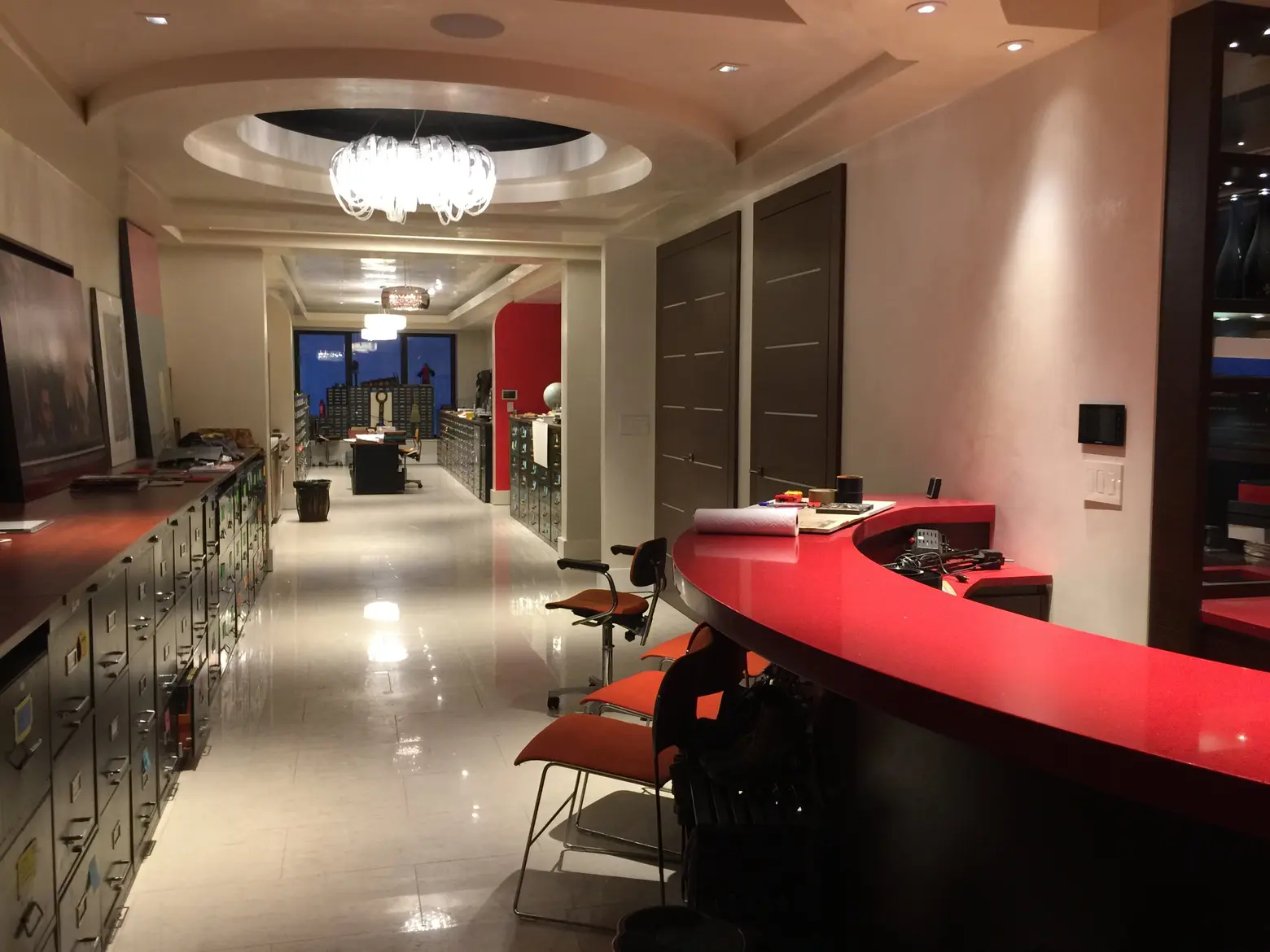 Maisel home/studio
Maisel home/studio
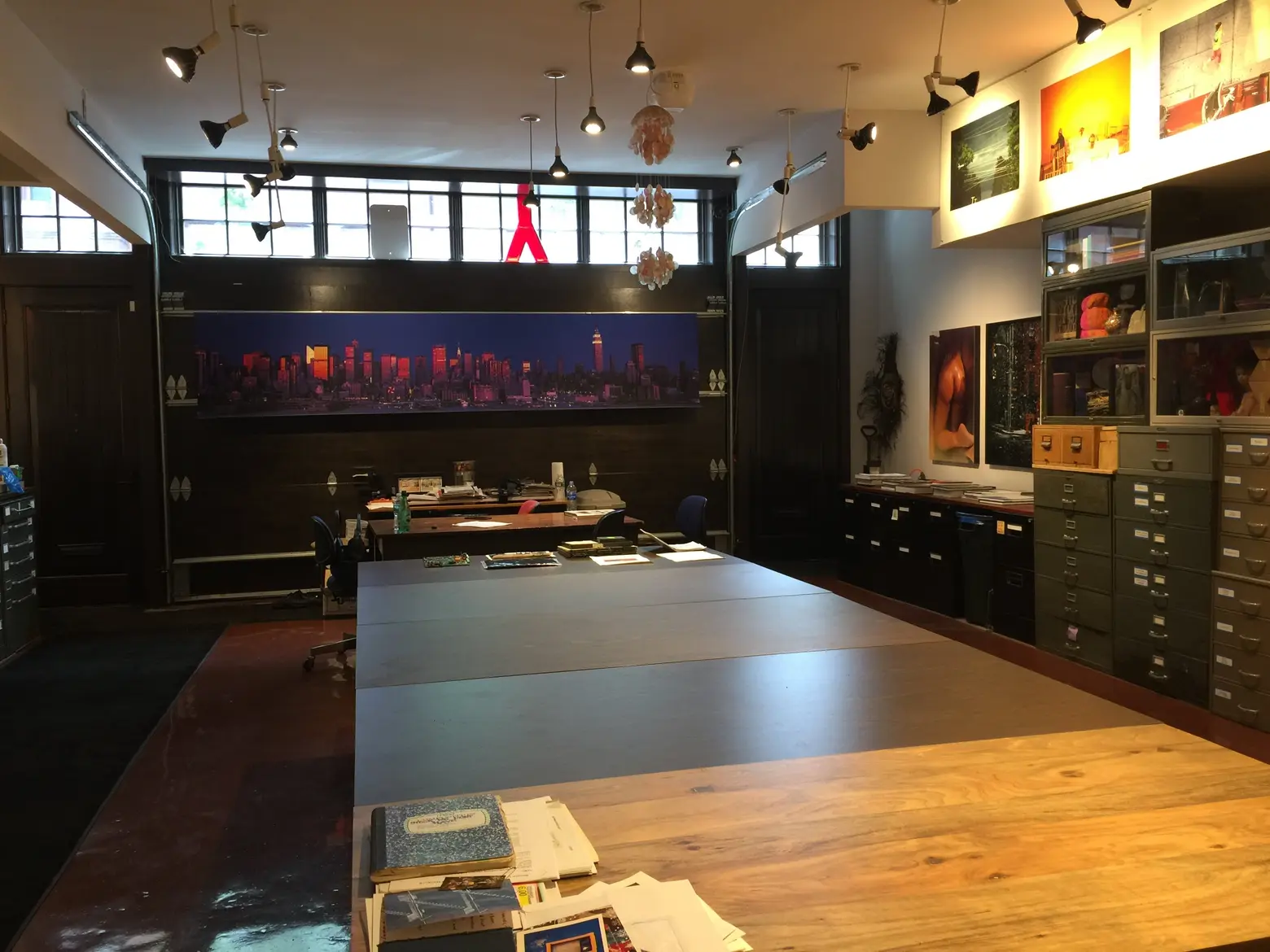 Maisel studio
Maisel studio
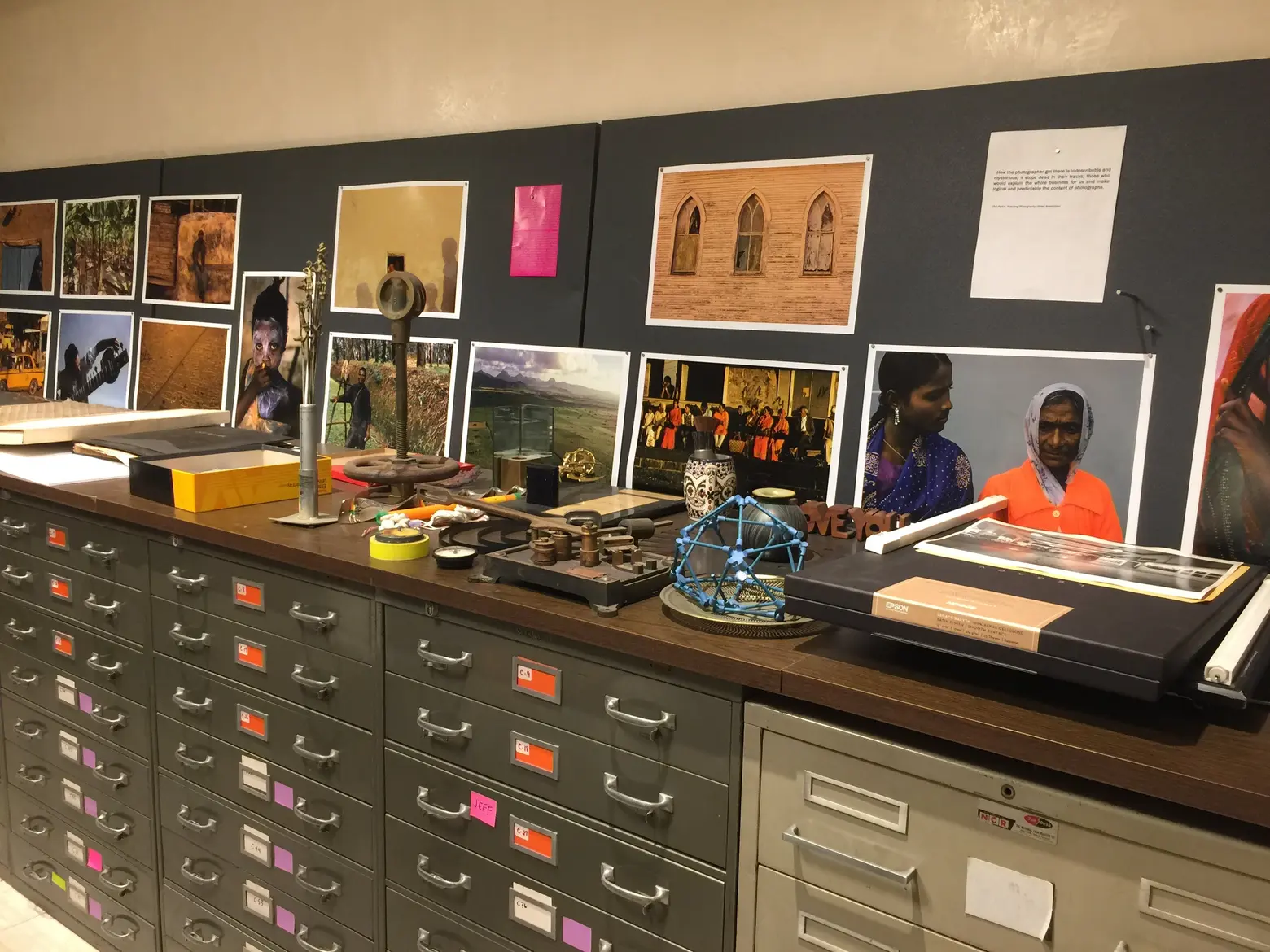 More filing cabinets and collectibles.
More filing cabinets and collectibles.
What was the motivation to move and sell?
It’s complex. One thing is that I figured it was time. Everyone had been telling me to sell the place since I bought it. And one guy said to me, “You realize you could’ve sold that place for $3 million but now that we had a recession, you’re not going to be able to.”
I always had the building in the back of my mind as my insurance plan, my retirement plan. It was everything.
In 1995, I was around 65 years old and I retired. I didn’t stop working, I retired which meant I would no longer do any commercial work because the terms of employment had gotten very shitty. I’d put away money over the years. So for those 20 years from 1995-2015, I didn’t really make a lot of money. In fact, I spent most of my money. In my head, I knew I was going to sell this place because I can’t do that forever. At some point, I decided I would do it. Also, I was partially motivated by the inundation of brokers’ letters. I have a whole file called “I want to buy the bank.”
Did you have any idea how much it was worth?
I thought it was worth what I could get for it. I was getting ridiculously low bids for it. [One developer] came to me through an acquaintance of an acquaintance. They offered me something like $20 million for it. I just looked at them and said, “You’re jerking me off, right? You can’t be fucking serious? Forget it, we’re out.”
I was thinking of something in the 30s or 40s and then I spoke to one person in the business and asked what do you think it’s worth. She said, $50 million at least. If I hadn’t had a need for money I might not have sold it.
I knew I was never going to find anything better. I knew my next home was going to be a compromise. I had 35,000 square feet and this place I have now is 5,000 square feet. I tried to buy the space next door but I couldn’t buy it without buying the building next to it which they wanted about $15 million for. I already spent a lot on this place and I didn’t want to be the kind of guy who had made all this money then didn’t have anything left. So I didn’t buy it. Somebody else bought it and they turned the four-story garage into the Parking Club. They sell $180,000 parking spots plus maintenance. So I went to the guy and asked to have the other building. He said, “It’s not for sale but I’ll rent it to you” but the rent was more than I thought it was worth. So two years have past and he’s rented out a portion of it.
I have 3,000 square feet of storage in New Jersey. I miss it. It’s all my toys, my files. If you look around, I’m a filing cabinet freak. At this point, we’re talking about renting the rest of the place. He’s rented about one-third of it.
I miss the place a lot. I went back there the other day. He did nice work, he respected it. He ruined the two best rooms, the bank president’s room and the ante room to the president’s room, but he may have had to because he had to make a second means of egress. Both rooms were paneled in mahogany, both had terrific plasterwork on the ceiling. They were just beautiful. One of them had a stained glass window, the other had two large windows which I closed off because there was a building right next to it.
Aby Rosen, the developer who bought the bank, is a big collector of art. Did you have any personal interaction during the sale?
Yea. We hated each other. I managed to offend him completely by correcting his use of language, which is a terrible habit I have. He said, “it’s a very simplistic offer.” And I said, “you don’t mean simplistic.” He said “what do you mean I don’t mean?” I said, “simplistic means something very different than what you mean. It does not mean simple.” It was a contentious thing. Fortunately, I had a very good lawyer who got along with his lawyer and we finally brokered the deal.
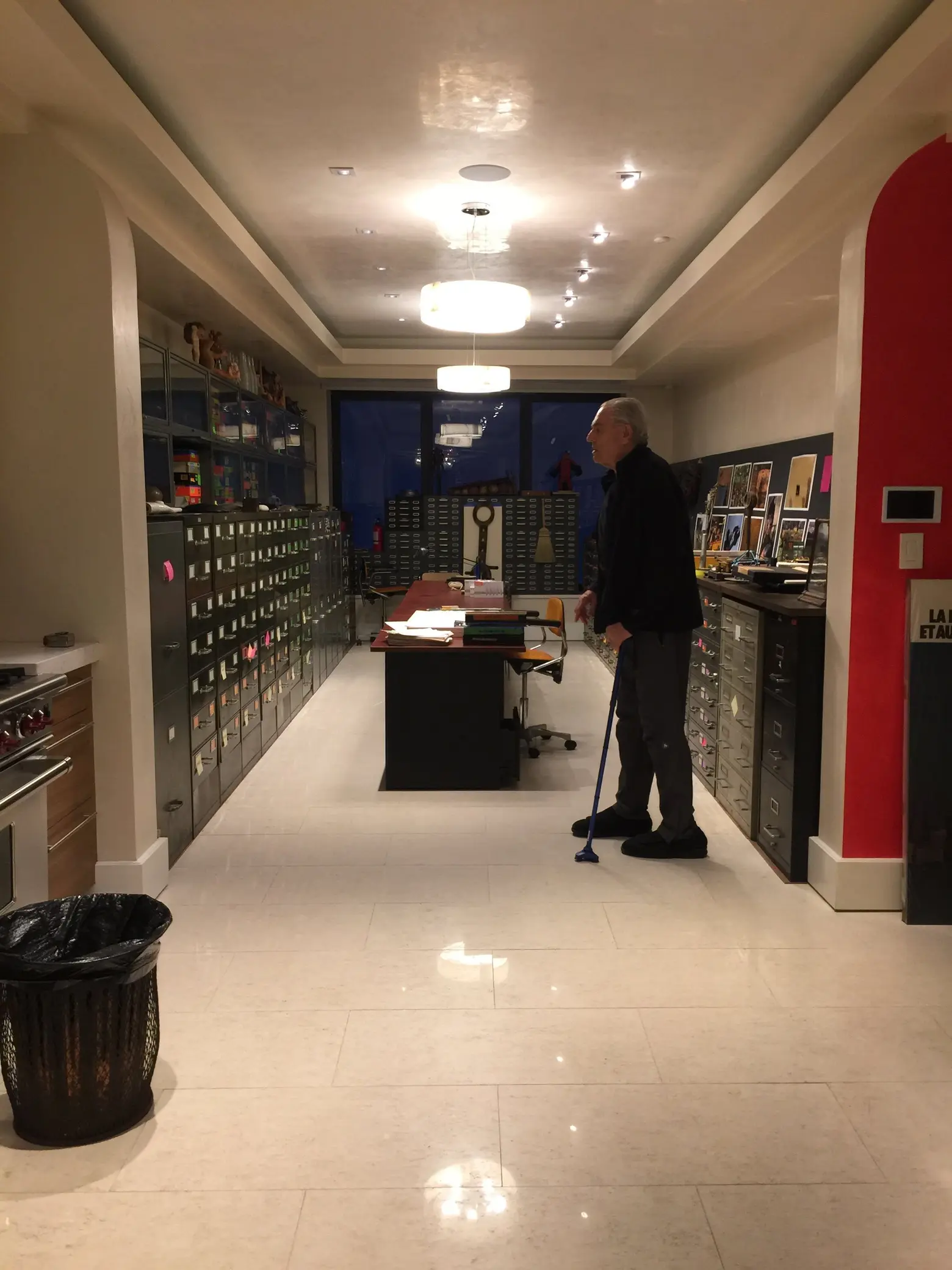 Maisel among one of his many rooms filled with filing cabinets.
Maisel among one of his many rooms filled with filing cabinets.
When did you find this place?
We found this place when we were in the process of getting out of the building. We had a deal at 190 where when we made a deal we had the legal right to stay there a certain amount of time. So it was after the deal was made but before we had to get out.
We found it simply because Matt’s [his assistant] wife was walking along and said, “I think you ought to look in it.” My wife went to look at it, came home and got me out of the shower and said, “You have to come see this place.”
The house has had a very bizarre past. It was used for gold chain manufacturing. A Hasidic guy owned it. At one point there were horses in here, this studio was a stable.
But I put nothing in this house. I have made no structural changes. We only changed the lighting and some minor things. When the owner came back and saw this place, and this is not a man given to compliments, he said, “this is terrific. It’s very artistic.”
When we smoke cigars here, the whole place fills up with rays of light. It’s marvelous, we photographed it.

This landscape is from the 70s or 80s. There are not buildings you can measure it by. You can measure it by the absence of buildings but you’d have to know what’s there now. That’s shot on one piece of film, not by stitching it together.
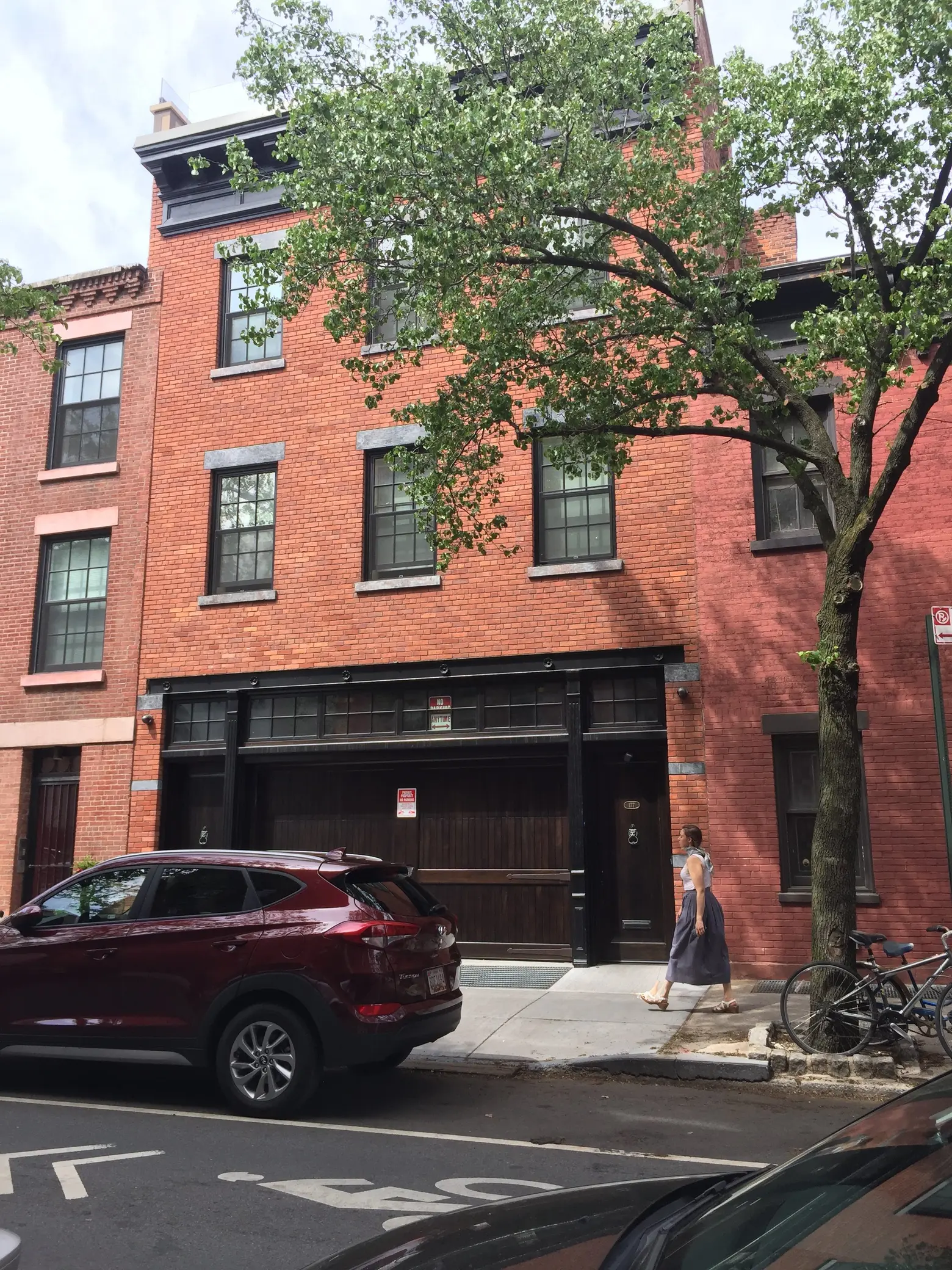 Maisel’s Cobble Hill home/studio
Maisel’s Cobble Hill home/studio
Have you lived in New York your whole life?
Until I lived in Brooklyn.
You don’t consider that New York?
No. This is a neighborhood. New York is very hard to put in words. Basically, when I take pictures here I feel like I’m invading somebody’s neighborhood. New York is on the streets for everybody. I’m sorry to be inarticulate about it but it’s an intuitive thing, I just feel New York is there to take. It’s available.
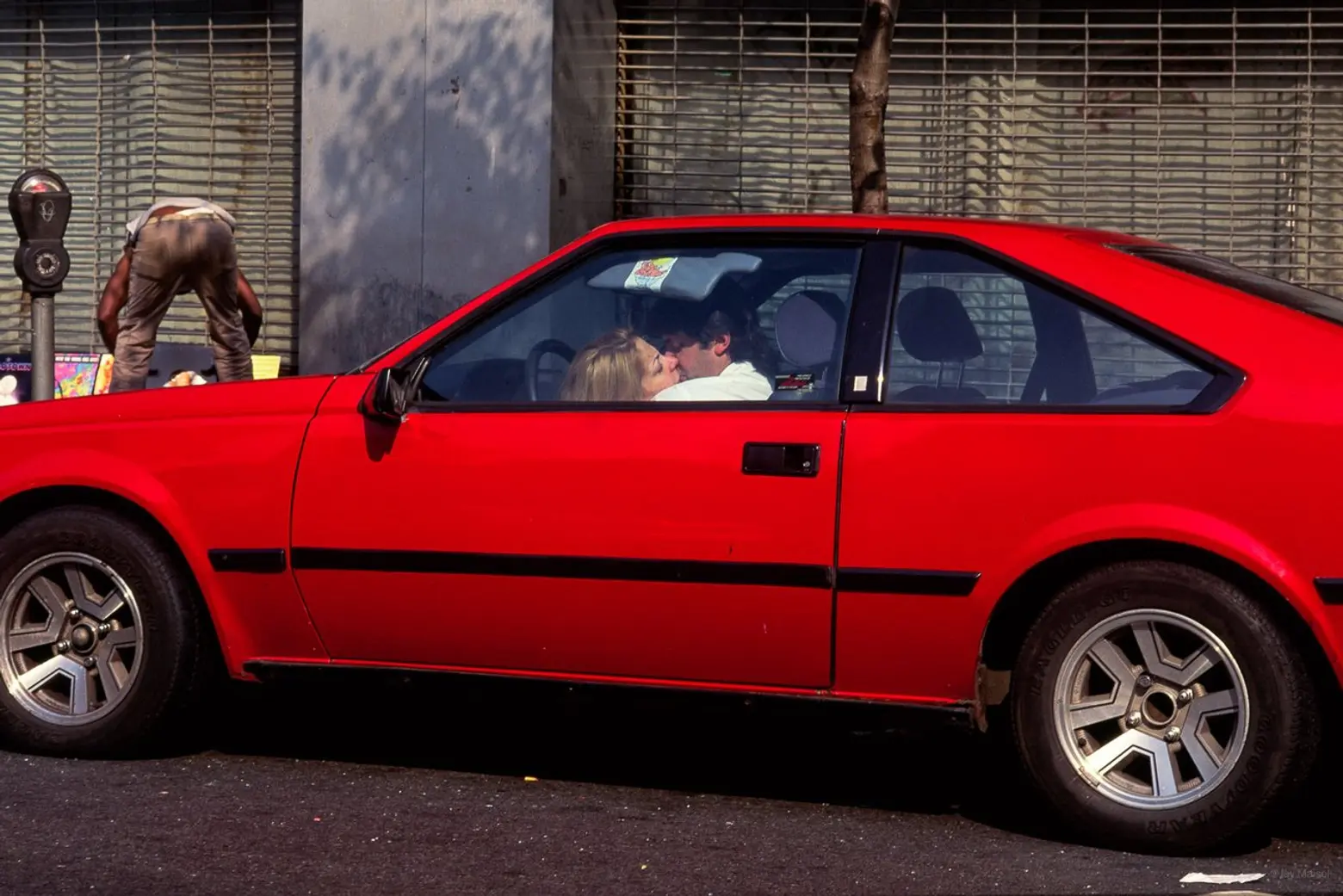 Couple in Red Car, 1992
Couple in Red Car, 1992
I was really struck by the photo of the two people kissing in the red car, in the front seat all embraced. How did you feel taking that photo? You weren’t invading their space?
Oh, sure. But basically what happens on the street is public. It’s not like I’m going into their home and shooting in their bedroom.
I have one photo in Paris just like that but even closer. And the guy got out of the car and started towards me and I said, “you’re fucking kidding, aren’t you? You think I’m not going to photograph that when you’re doing it in public?” And he turned around and got back in the car.
I want to do a book called, “The First Time I Saw Paris.” What other country besides the United States thinks they’re the best in the world. We have the best fashion, the best food and they’re probably right. They look at us and think of us as animals. Now that we have Trump, it’s valid.
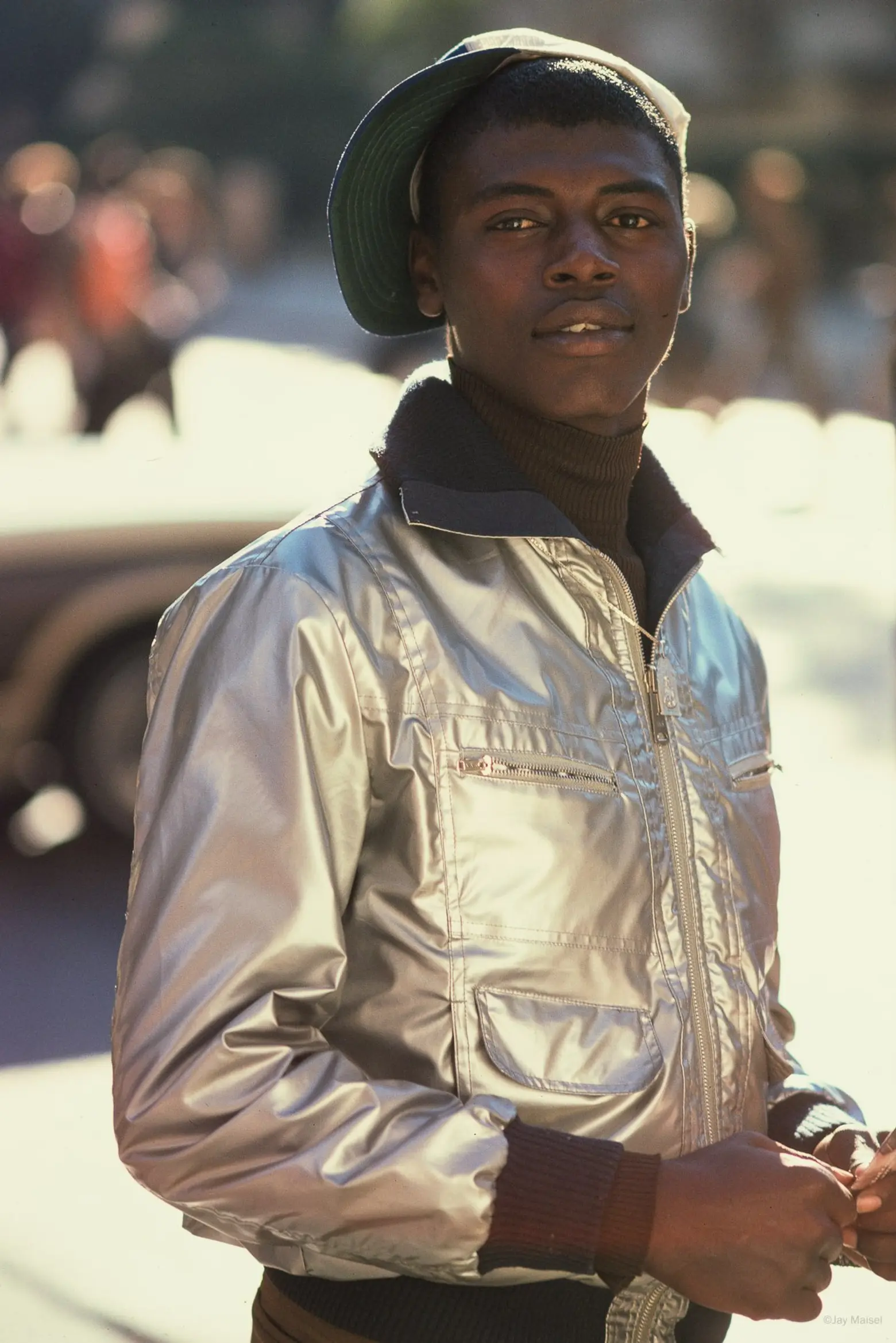 Man in Silver Jacket
Man in Silver Jacket
There was young man with a shiny silver jacket. Did you just take his photo and walk away.
No, I smiled at him and he smiled at me.
What struck you about him?
Why do you like the picture?
Because he has something.
That’s what struck me about him. He has a great presence.
As does this guy.
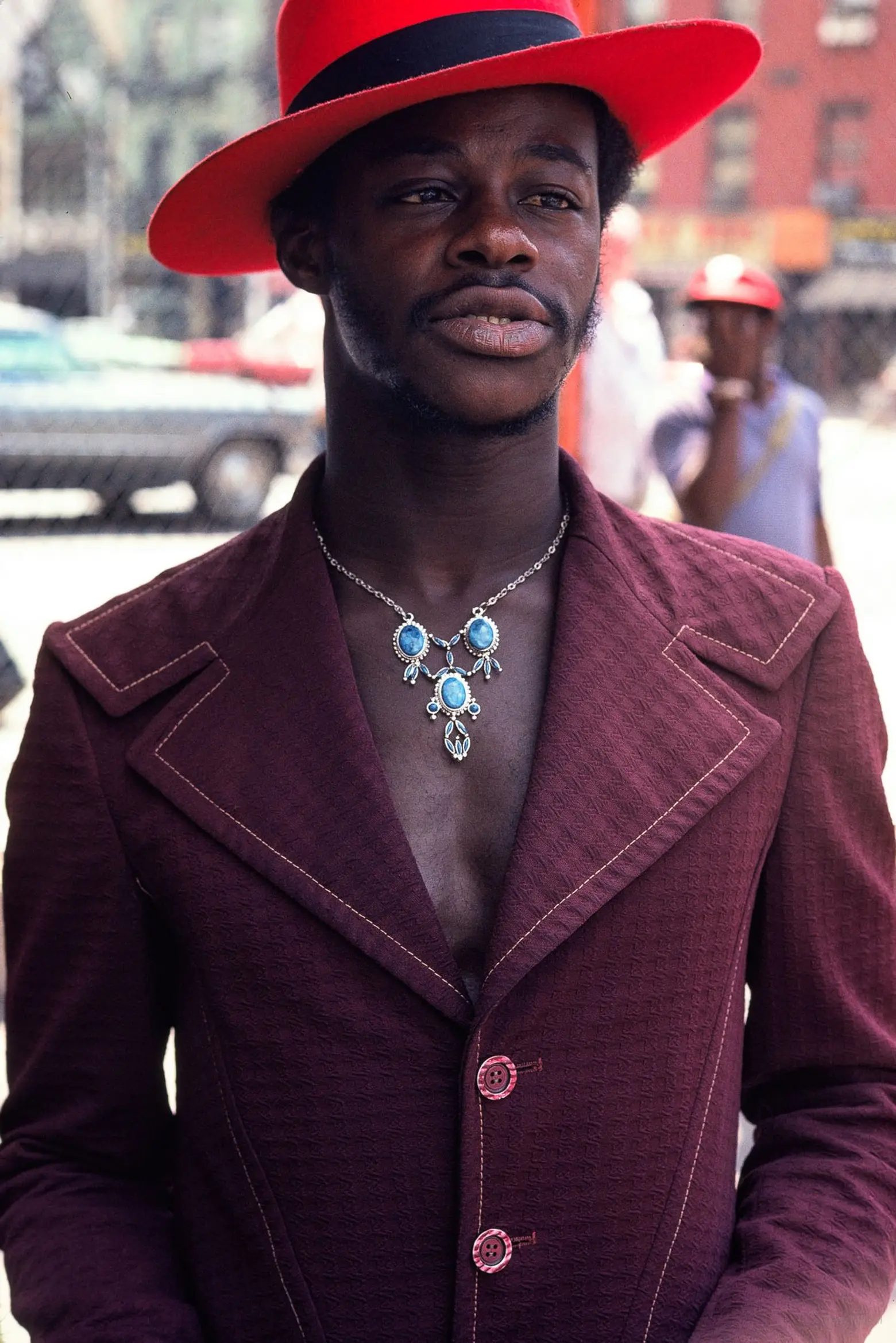 Man in Purple Jacket, 1974
Man in Purple Jacket, 1974
Oh, he’s a pimp. If he’s not a pimp, he’s a pimp want-to-be. Every picture has some simple story about it. Very few don’t have any.
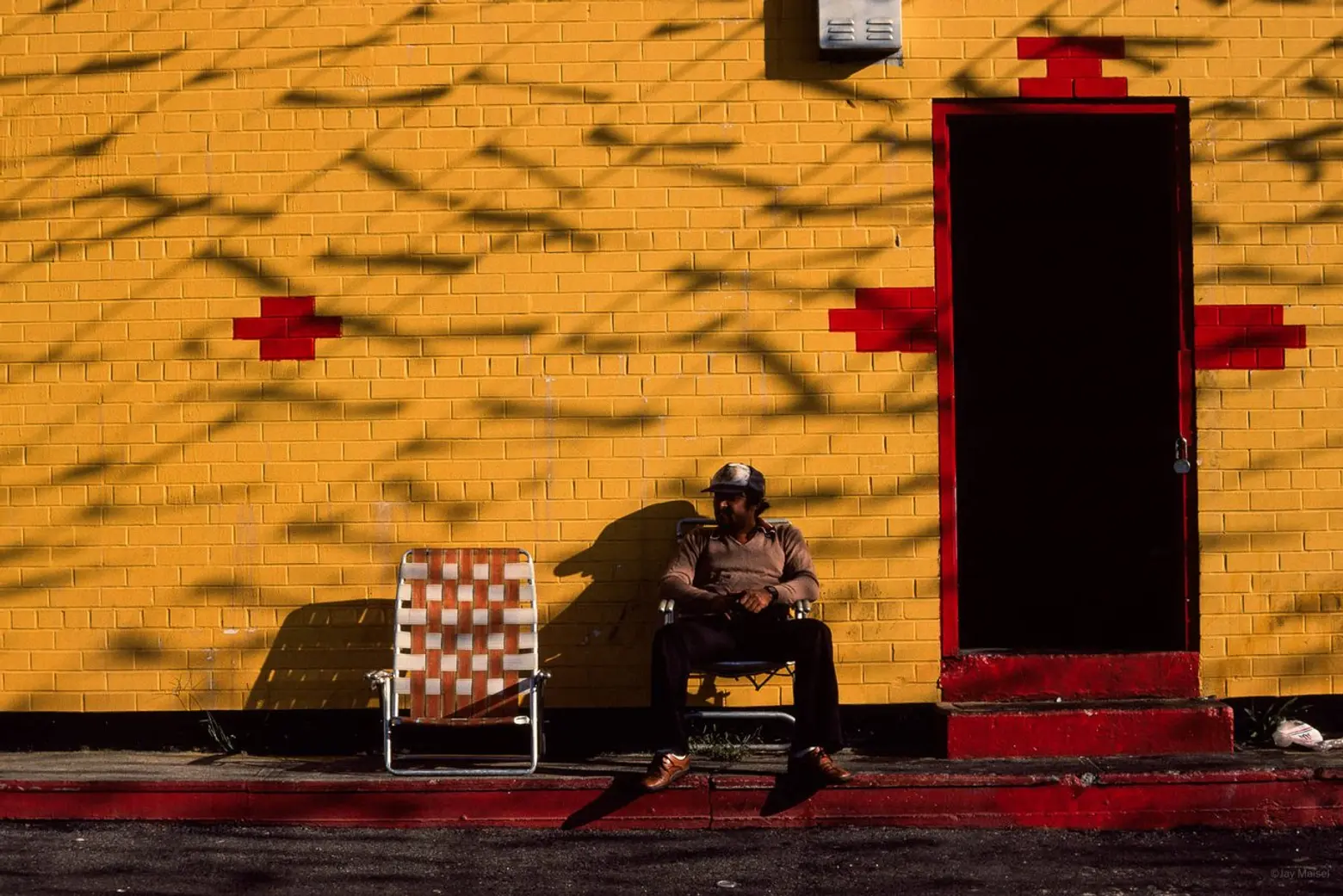 Man Sitting by Yellow Wall, 1983
Man Sitting by Yellow Wall, 1983
In this picture, the guy got up and came toward me and said, “what the hell are you shooting?” I said, well, I was shooting the light and you. You were in it, you look great.
The guy going to the bathroom on the street is priceless.
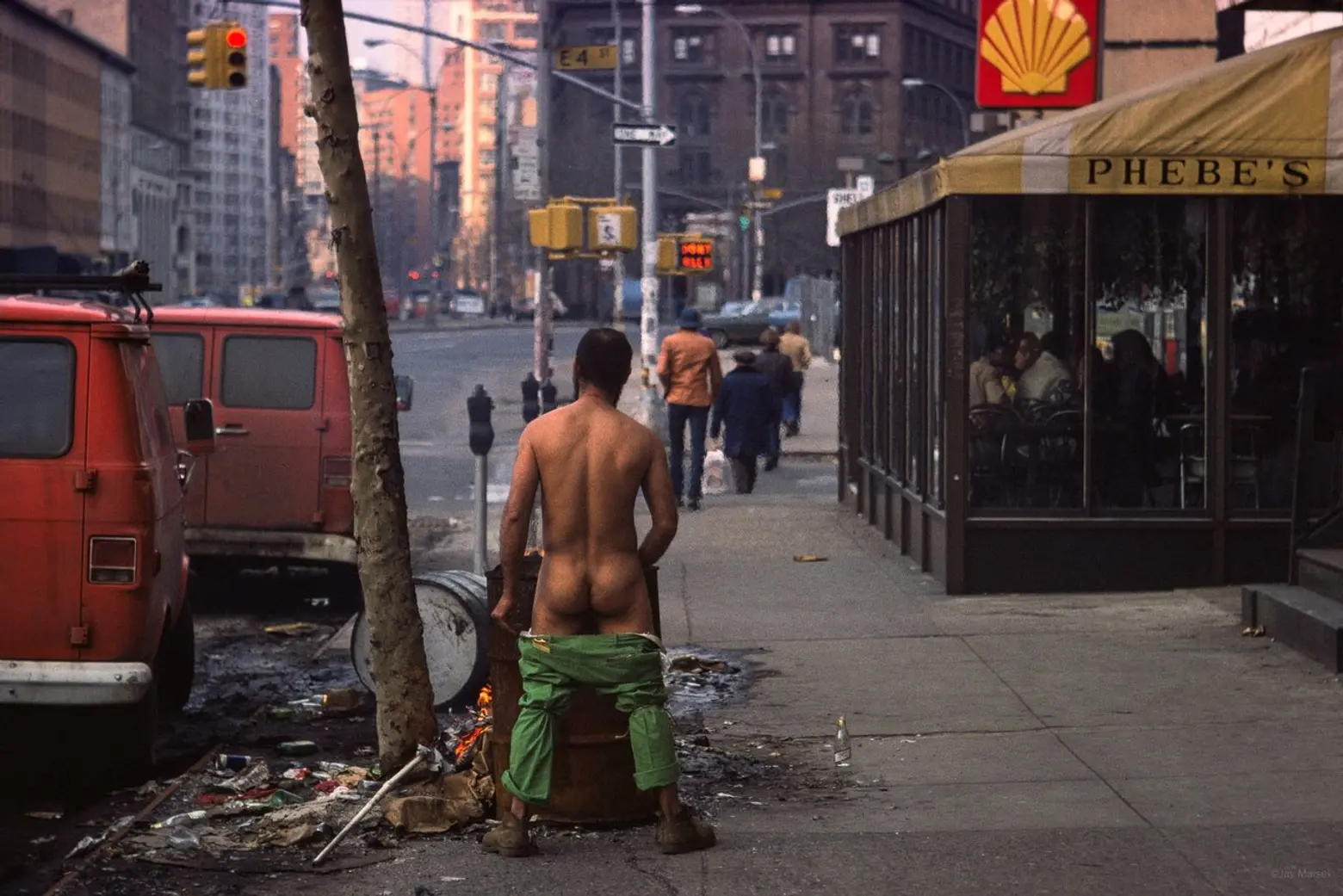 Man in Green Pants, 1978
Man in Green Pants, 1978
That’s funny because we got a letter asking, “is that man really urinating in public?”
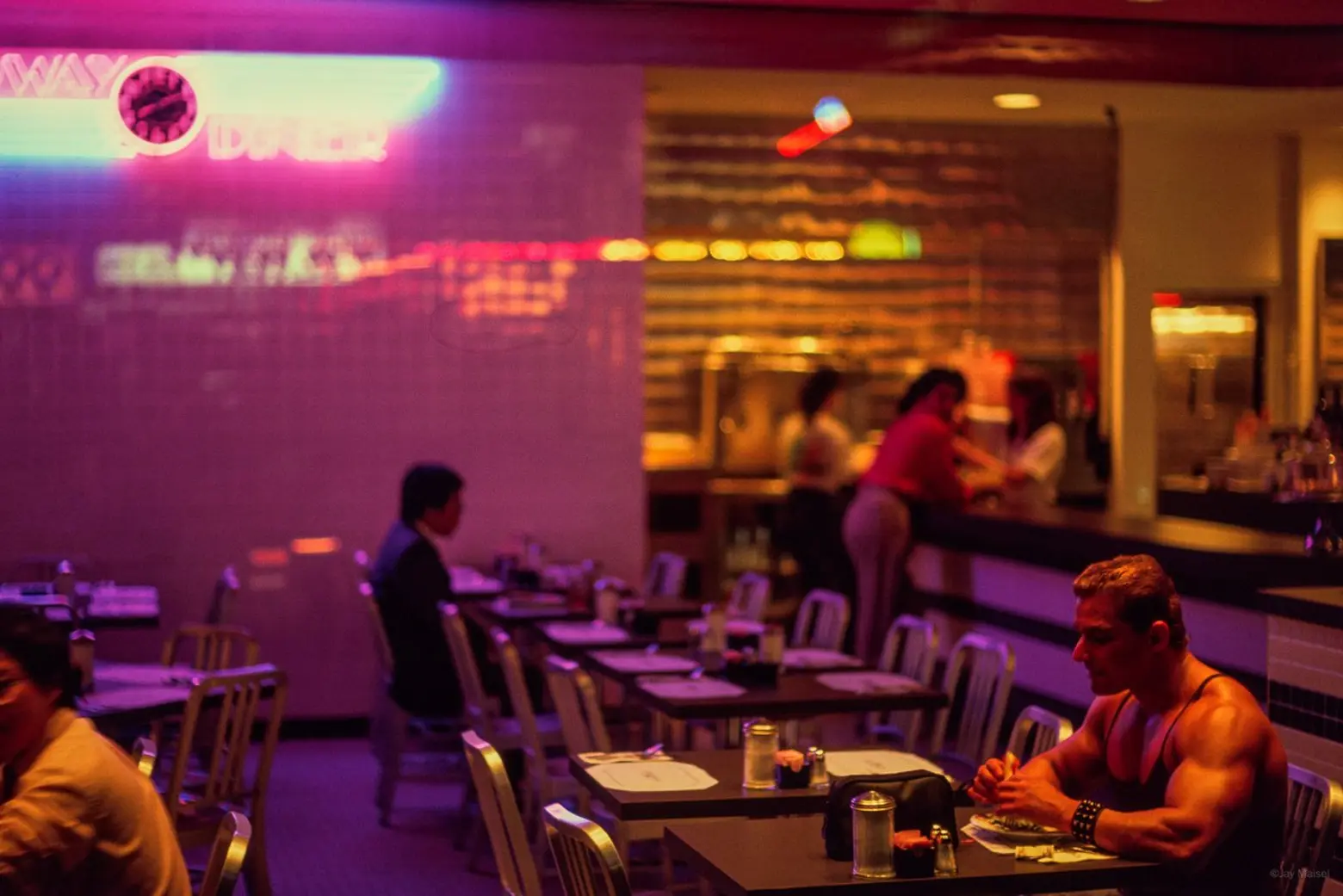 Body Builder in Diner
Body Builder in Diner
What struck you about this scene?
The guy, obviously. But I like the light and the casualness of him sitting there, completely showing off and the magic of the light.
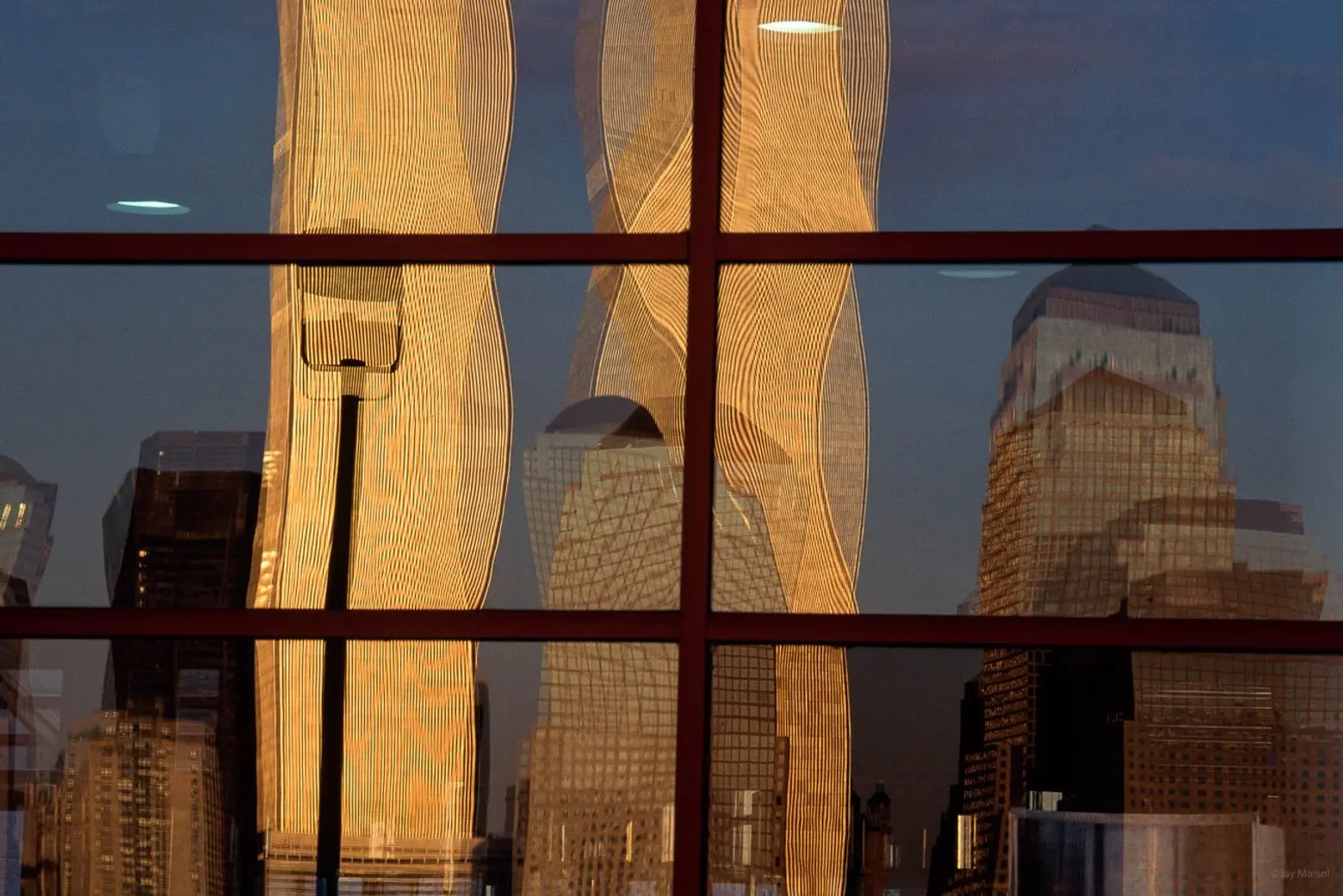 World Trade Center Reflection, 1999
World Trade Center Reflection, 1999
You don’t seem to take pictures of a lot of buildings, why?
Oh, I used to but I don’t anymore. When I started, I was very interested in nature. And then I got very interested in people. And then I got very interested in city and buildings. And then I got interested in exotica and naked women. But then finally, it came back to people. And that influences the way I edit now. Except for my Baja, California series, I’m not showing anything about nature. But when I photographed Baja, one of the tenants of the job was I couldn’t photograph anything that smacked of civilization and the hand of man. It’s a wilderness book. Outside of that, nature doesn’t interest me much anymore. I’ll take a day in the country every once in awhile be transformed into, “oh, isn’t this beautiful” but then, after a while, I want a place where I can get a bagel at 4am.
Sooner or later I want to publish some books. I have published a number of books already. I am now spending eight hours a day for two-and-a-half years is to put together something for a book. But to some degree, I’m more interested in getting it on the website. I knew a guy once who was a genius at business, Richard Benson, he made plates for books for years. He’s also the head of the art department of Yale. He was technically and aesthetically adept, a real genius. When he retired from Yale, he went out shooting on his own. I saw his stuff and it was amazing, not my style but amazing. I said to him, “you’re not looking gesture” and he said, “yea, I gave that up a long time ago, I’m too slow to get the gesture.” I asked, “what are you going to do for the rest of your life?” He said, “Well, I’m hoping to die in obscurity.” What he meant was he did not want to spend his life promoting himself. If it happened it happens. He didn’t want to spend his time going around, looking for publishers, doing exhibitions and whatnot. The next thing I know, he’s got an exhibit at the Pace Gallery in Manhattan on 57th street. I bought a couple of prints and I noticed I had bought the 76th and 77th print that had been sold from the show. And I said to him, “how is this obscurity thing working out for you?” I have no wish to die in obscurity but I don’t want to spend my time promoting.
I did a book with a friend of mine, the illustrator, Bob Gill, called “Four Eyes.” It’s a good book but we can’t get anybody to publish it. When we started, I told him we wouldn’t be able to get anybody to publish it and he said, “why not?” Because the people who know me and love my work don’t have any idea who you are and the people who know you and love your work, haven’t a clue of who I am. So it’s not going to work. We’ve sent it to a lot of people, everybody loves it but nobody loves it that much because they’re one way or the other. He’s an incredibly funny guy. He came to the bank and at one point, the literal bank vault was empty, later I stored all my negatives there, everybody would come into this room and say, “wow, what a great place to make into a restaurant or what a great place to have a little place to dine or what a great place to store your negatives.” Bob came in and said, “ahh, what a great place to masturbate.” You understand the mind.
We never, ever communicated about matching pictures until we did the book and the pictures he did and I did were already done. He’d send me a bunch of pictures, I’d send him a bunch of pictures. He would try to match mine, I’d match his.
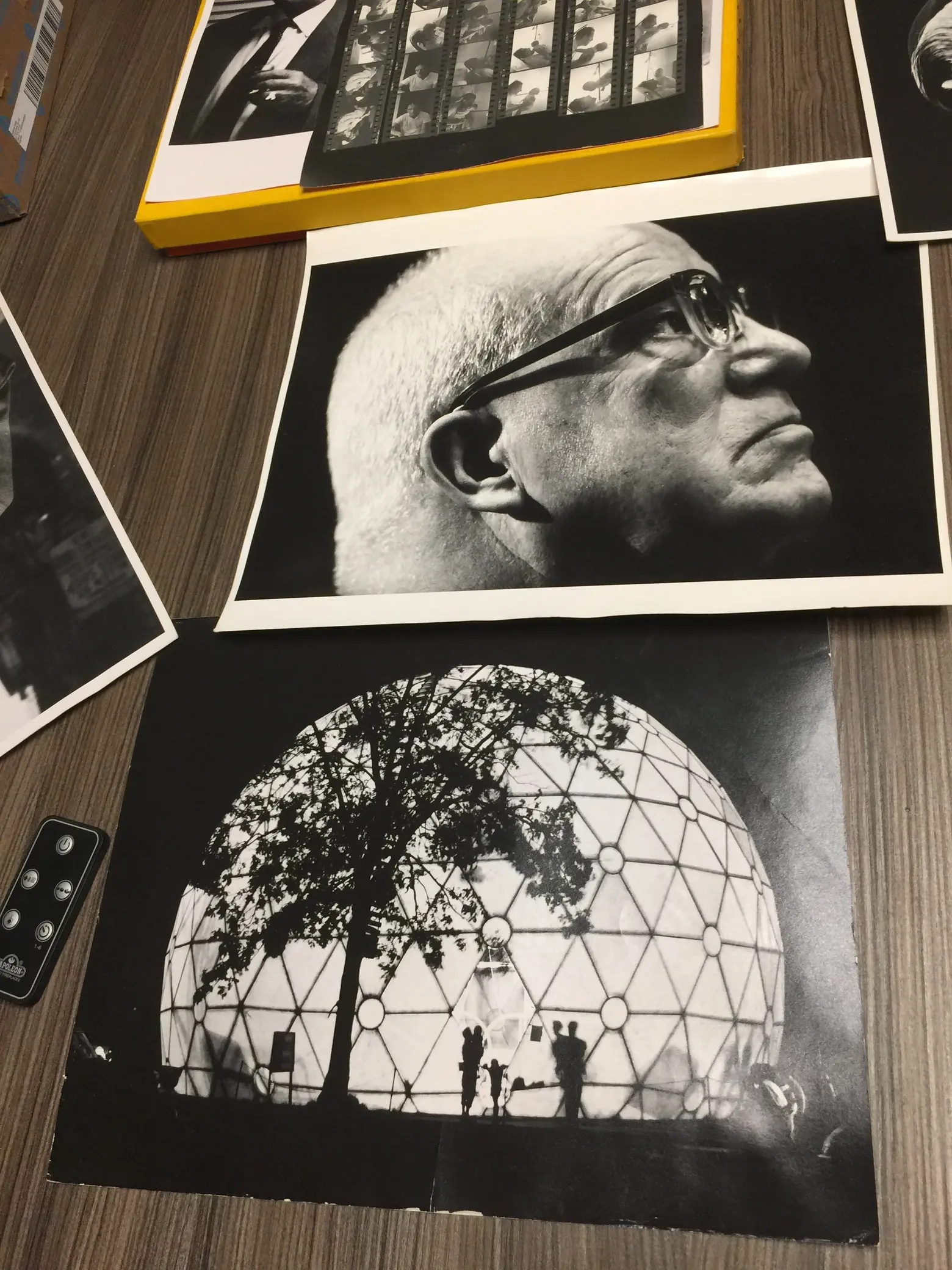 Buckminster Fuller. Maisel was his apprentice and said he would have devoted his life to him if “Bucky” let him
Buckminster Fuller. Maisel was his apprentice and said he would have devoted his life to him if “Bucky” let him
When was the last time you took a photograph?
The other day. I just saw something I liked, it was in the building.
Do you ever use your iPhone?
Yea, that’s what I’m using. The problem is I have bad arthritis and I have neuropathy in my feet which means I don’t feel them really. So standing and photographing is an impossibility, I’m going to fall flat on my face.
What was Miles Davis like when you shot his album cover?
I have no idea what these people are like. I was shooting from the audience or nearby. I didn’t get to meet any of them. I just felt so grateful I was able to. I just went out to shoot on my own and he was one of the guys that was there. They called me and said do you have any pictures of Miles Davis. Simple.
In reference to his very stern author photograph in “Four Eyes,” he said, “I showed this photograph to another photographer, Greg Heisler, tell me how he lit it. He said, “he got a soft light and a room light” and that was exactly right. One of the ways you can tell is to look in the eyeballs. Because the eyeballs sometimes have a perfect reflection of what the set up is.
You don’t mind having your own pictures taken?
I don’t stop people from shooting.
Can I take a picture of you? It’s very intimidating taking a photograph of a photographer
Well, if you start with the concept that you’re not competing with me, it’s not.
That is for sure.
Now you’ve got to show it to me.
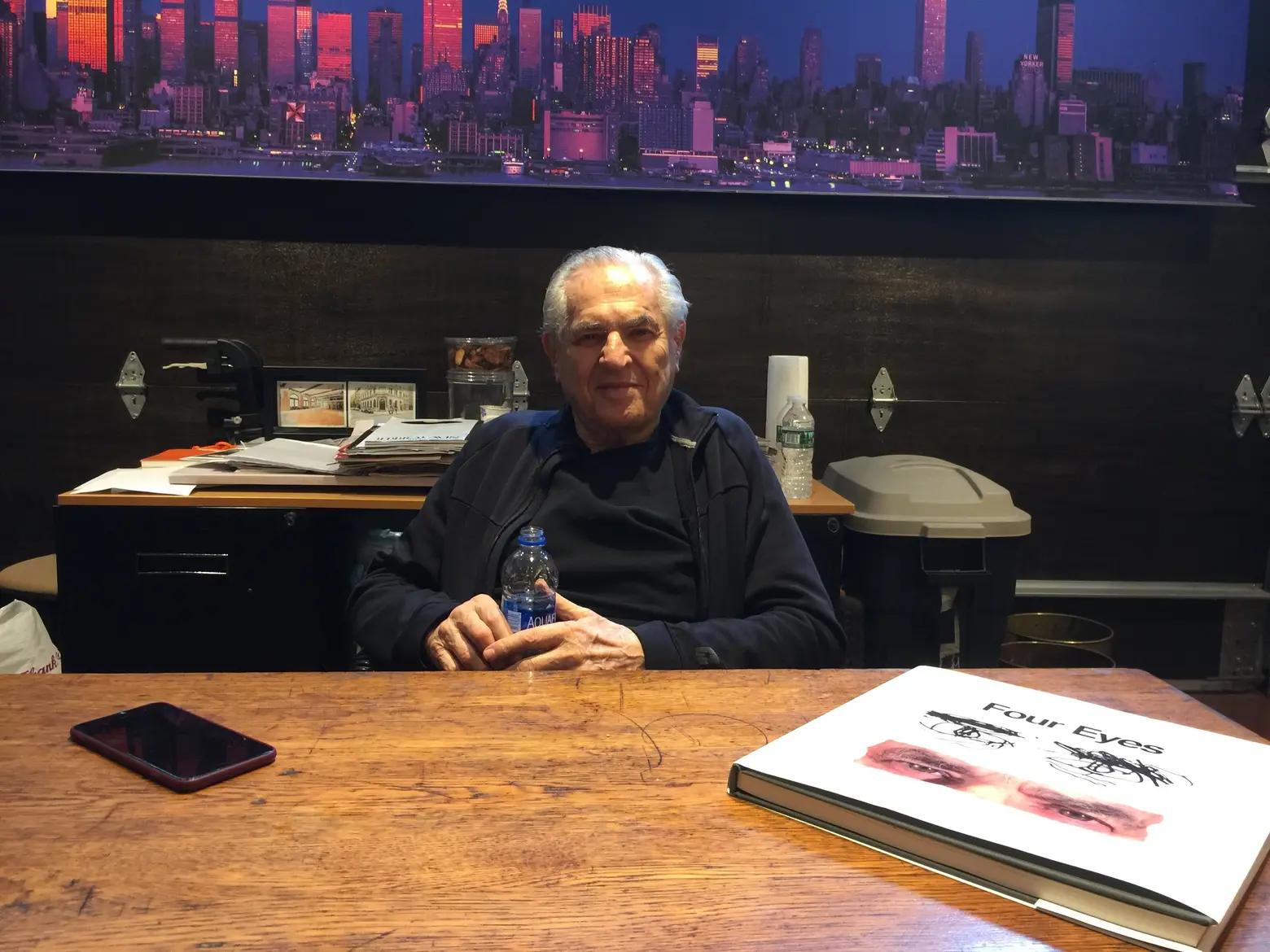 Jay Maisel in his Cobble Hill home/studio
Jay Maisel in his Cobble Hill home/studio
Not bad. I should’ve raised my head though.
+++
All “Jaywalking” photos © Jay Maisel 2018
All “Jaywalking” photos © Jay Maisel 2018
